












1570 Pop. of Incan Peru: 1.3M; down to 600K by 1620. A plague ravages the Russian countryside. In late Jan. Sir Leonard Dacre (1533-1573) of N England, heir of George Dacre, 5th Baron Dacre of Gillesland, who had tricked Northumberland and Westmorland into starting the Northern Rising last year in hopes of betraying them and inheriting more land from his nieces is found out, and starts his own mini-rising with 3K Cumbrians, which is quashed within a week (early Feb.) by the queen's lt. gen. Henry Carey, 1st Baron Hunsdon (1526-96), Elizabeth I's cousin, son of Anne Boleyn's sister Mary Boleyn (-1543) and William Carey (-1528); after his men stage "the bravest charge that I ever saw" (Hunsdon), Dacre escapes to exile in Flanders, where he dies in poverty, while his men flee to Scotland and are mopped-up by the Scottish regent; Hunsdon becomes privy counselor in 1577, and lord chamberlain lt. "for the defence and surety of our own Royal Person" in 1588. On Jan. 9 40-y.-o. Ivan IV the Terrible sends his army to punish Novgorod for allegedly plotting to change its allegiance to Lithuania, sacking and burning the city and torturing thousands of inhabitants in a 5-week binge, incl. throwing children into an icy river - throw another shrimp on the Volgie, mate? On Jan. 23 uppity Scottish regent James Stewart, earl of Moray (b. 1531) is assassinated in Linlithgow by James Hamilton of Bothwellhaugh and Woodhouselee (-1581) at the house of his uncle Archbishop John Hamilton to get even for confiscating his lands for supporting Mary Stuart, Queen of Scots, and on July 12 pro-Elizabeth Matthew Stuart (Stewart), 4th Earl of Lennox (1516-71) (James VI's grandfather) (whose wife Laddy Lennox is kept in the English court as a hostage) is named regent of Scotland (until 1571), hanging Roman Catholic Archbishop Hamilton for complicity in Darnley's murder; meanwhile Scottish secy. of state Sir William Maitland of Lethington (1525-73) et al. begin a plot to restore Queen Mary Stuart, while the French threaten Elizabeth with war if she doesn't restore her, causing her to make Mary an offer contingent upon ratification of the Treaty of Edinburgh and sending her son James to England as a hostage first, which Mary agrees to in Oct. On Jan. 23 Queen Elizabeth I opens the Royal (Stock) (London) Exchange in London, and dines at the house of its builder, wealthy merchant Sir Thomas Gresham (1519-79) on Bishopsgate St. On Feb. 8 Pope Pius V orders the hos in the walled Prostitutes' Quarter in Rome to be given a daily food allowance during the springtime weeks of Lent when the two gates to the quarter are locked per his orders. Speaking of giving no quarter to prostitutes? On Feb. 25 Pope Pitiless Five-O, er, Pius V pub. the fatwah, er, bull Regnans in Excelsis (Reigning on High) (claiming he's above all earthly princes so he has jurisdiction to step in?), excommunicating that bastard Elizabeth I, "the pretended queen of England, the serpent of wickedness", inciting her pius, er, pious Catholic subjects to rebel and kill her if they want to get a special place in heaven next to his holy ghisler, and urging foreign princes to rise against her in a holy crusade; too bad, he issues it before learning of the collapse of the Northern Rising, causing it to backfire when the English begin clamping down on all Roman Catholics, considering them not just heretics but traitors, with Elizabeth I making it a crime to become a Roman Catholic priest in England, while Philip II and Charles IX, who are not ready to invade England get pissed off for not being consulted first. Swiss theologian Heinrich Bullinger writes the soundbyte: "The spring of this year was like winter, cold and wet, the wine blossom terrible, and the harvest bad." On July 14 Pope Pius V issues the Missale Romanum (Roman Missal), the liturgal book containing the texts and rubrics for celebration of the Roman Mass - that's great, now shave and put on your tux? In July the Ottomans under Selim II invade Cyprus and capture Nicosia, then siege Famagusta in Aug. (until 1571), and declare war on Venice (ends 1573); meanwhile the Algerians retake Tunis from the Hapsburgs for the Ottoman Empire (until 1573), and siege Cyprus, causing Pope Pius V to form the Holy League next year with Spain and Venice against the Muslims; in 1569-74 Selimiye Mosque is built over St. Sofia Church in Nicosia. On Aug. 5 Charles IX of France and the Queen Mother Catherine de' Medici sign the Peace (Treaty) of St. Germain-en-Laye, ending the 3rd French War of Religion and granting Huguenots amnesty and freedom of worship - very little amnesty or freedom? In Aug. the Thomas Percy, 7th Earl of Northumberland (b. 1528) is by captured the Scots, handed over to the English and put to death at York; the Earl and Countess of Northumberland make it to exile in Flanders. In Aug. Ridolfo Plot suspect Thomas Howard, 4th Duke of Norfolk (1536-72) is released from the Tower and placed under house arrest in Charterhouse near Smithfield on condition of good behavior, but (liking Stuart poon and/or remaining a loyal Catholic?) he resumes his Ridolfi Plot with Mary Stuart - I just might turn into smoke but I feel fine? In Sept. Elizabeth receives an out-of-the-blue marriage proposal from 19-y.-o. Duke Henry of Valois (1551-89) (later Henry III), brother and heir of French king Charles IX (whose portrait bears a striking resemblance to Hollywood actor David Faustino (1974-)?) in an effort to unite France and England against Spain, causing her to send her swarthy Puritan "Moor" Sir Francis Walsingham to Paris as an envoy, where he finds out that Anjou is not only priest-ridden but a bisexual, wearing a double row of rings, and pendants in his ears (in later life he becomes a transvestite); not that that would stop her if it would save England? - viva Viagra? On Nov. 17 Queen Elizabeth's Accession (Golden) Day is first celebrated publicly in England as an Anglican holy day in an attempt to supplant Virgin Mary worship by Roman Catholics, hailing Liz as Judith and Deborah, and holding costumed jousts at the Horse Guards Parade at Whitehall, with Sir Henry Lee of Ditchley (1533-1611) as the queen's champion (until 1590), the queen changing costumes each year, top hits incl. Astraea (virgin goddess of justice), Cynthia (lady of the sea), Diana (the huntress), and Gloriana (the Faerie Queen); meanwhile special services, feasts, and fireworks are held all over England; the day is celebrated until the late 1600s, becoming the last flowering of chivalry in England. On Nov. 22 the first St. Cecilia Festival (patron saint of musicians) is held in Evreux, Normandy, France. On Dec. 13 the Peace of Stettin is signed, and Denmark recognizes the independence of Sweden. The Imperial Diet meets in Speyer. The 2nd Rebellion of the Alpujarras in Granada, Spain (begun 1568) is quashed. The Calvinists, Lutherans, and Moravian Brothers of Poland form the Consensus of Sendomir against the Jesuits. London Anglican bishop Edmund Grindal is transferred to the archbishopric of York after his laxity in punishing Bible-thumping Puritans gets him in trouble; most of the non-conformists in York are Roman Catholics. The First Russo-Turkish War (begun 1568) ends with an Ottoman military defeat but a commercial V when Russia destroys their fort on the Terek River and allows Muslim trades access through Astrakhan. The Ottomans regain their lost terrorities in Yemen and drive the rebels into the mountains. Two English forces invade Scotland. Holy Inquisition tribunals are established in grateful Lima, Peru and Mexico City, Mexico - I'll show you a rock slide? The Portuguese assassinate Sultan Hairun of Ternate in North Maluku (E Indonesia), causing his son and successor Sultan Baabullah (-1583) of Ternate to expel them, then get infected with Euro imperialism and conquer the neighboring kingdoms of Tidore and Bacan, followed by Banggai, Tobunku, Butung, and Salayar. Charles IX of France marries HRE Maximilian II's daughter Elizabeth; Philip II marries HRE Maximilian II's daughter Anne of Austria (his 4th wife); Queen Mary of Scots divorces James Hepburn, 4th earl of Bothwell; Margaret of Valois is betrothed to future French king Henry of Navarre (Henri IV), lineal descendant of 13th cent. Robert, 6th son of Louis IX and his Bourbon wife Beatrix through Antoine de Bourbon, duc de Vendome and Jeanne d'Albret, heiress of Navarre, which is good, since the main line of Bourbon went extinct in 1527 when traitor Charles of Bourbon got killed while sacking Rome; Antoine is the son of Charles, comte de Vendome, brother of Cardinal Charles of Bourbon and long gone Prince Louis I of Conde; Henry I, 2nd duke of Guise courts Marguerite of Valois, pissing-off her brother Charles IX, but he marries Catherine of Cleves, getting him back in his good graces. In this decade the term "punk" is first used in the ballad "Simon: The Old Kinge" to mean a prostitute: "Soe fellowes, if you be drunke, of frailtye itt is a sinne, as itt is to keepe a puncke." An earthquake devastates Ferrara, Italy, home of the late Lucrezia Borgia. Japan opens the port of Nagasaki to overseas trade. About this time gold mining peters out in Puerto Rico. About this time the Venetians import coffee from Turkey; in return tobacco arrives in Turkey and Poland; European tobacco cultivation begins in Cuba. Postal services begin in Nuremberg. The Whitechapel Bell Foundry in Whitechapel, Tower Hamlets, London is founded, going on to crank out the Liberty Bell and Big Ben, becoming the oldest manufacturing co. in Great Britain in modern times. The English govt. orders Foxe's Book of Martyrs to be placed with the Bible in all cathedral churches. Girolamo Cardano is imprisoned by the Inquisition for casting the horoscope of Jesus Christ - it said he's never amount to anything? Jean Antoine de Baif (1532-89) founds the Academie de Poesie et de Musique in Paris. Milan archbishop (St.) Carlo Borromeo (1538-84) founds the Helvetic College in Milan for Swiss (esp. Graubunden) clerics. Architecture: Mar's Wark (finished in 1572) in Stirling, Scotland is begun by John Erskine, earl of Mar (1531-72). Nonfiction: Roger Ascham (1515-68), The Scholemaster (posth.). Henry Billingsley (-1606) (tr.), The Elements of Geometrie of the Most Ancient Philosopher Euclide of Megara; first English trans. of "Euclid's Elements"; printed in folio by John Day, incl. several 3-D fold-up diagrams illustrating solid geometry; the preface by mathematicisn-astrologer John Dee (1527-1609) preface by John Dee (1527-1609) extols the virtues of mathematics, becoming more important than Francis Bacon's "The Advancement of Learning" (1605). Thomas Blundeville (1522-1606), A Very Brief and Profitable Treatise Declaring How Many Counsels and What Name of Counsellors a Prince That Will Govern Well Ought to Have. Christopher Clavius (1638-1612), Commentary on Johannes de Sacrobosco's "De Sphaera"; first of 16 eds. util 1618, making him Euro9pe's most respected astronomer, although he believes in the geocentric theory not the heliocentric theory. John Dee (1527-1609), Brytannicae Reipublicae Synopsis; outlines the state of the Elizabethan realm, advocating a policy of imperial expansion into the New World. Al-Istakhri, Map of the World; in Arabic, based on a 10th cent. Ptolemaic projection with S at the top. Thomas Kirchmeyer, The Polish Kingdom (tr. Barnabe Googe). Blaise de Monluc, Commentaires. Abraham Ortelius (1527-98), Theatrum Orbis Terrarum (May 20); the first modern atlas (53 maps); the result of being turned on to geography by Gerhardus Mercatur in 1560; gets him an appointment as royal geographer to Philip II of Spain in 1575. Andrea Palladio (1518-80), The Four Books of Architecture (I Quattro Libri dell'Architettura); bestseller; vol. 1 is trans. to English in 1663 by Godfrey Richards, and all 4 vols. in 1715-20 by Giacomo Leoni. Bartolomeo Scappi (1500-77), Opera dell'Arte del Cucinare; a cookbook by Pope Pius V's head chef, which incl. 1K recipes, displays the first known picture of a fork, and waxes lyrical about Parmesan cheese, and how the Jews fatten goose livers to weigh between 2-3 lbs., becoming the first celebrity chef? Poetry: Art: Hans Eworth (1520-74), Elizabeth I. El Greco (1541-1614), Portrait of Giorgio Giulio Clovio; his earliest surviving portrait. Lucas de Heere, A Group of Englishwomen; their cool headwear. Nicholas Hilliard (1547-1619), Portrait of Queen Elizabeth I. Tintoretto (1518-94), Moses Striking the Rock. Titian (1477-1576), Philip II Presenting His Son to Victory. Births: English Gunpowder Plotter Thomas Bates (d. 1606); servant of Robert Catesby (1573-1605). English Gunpowder Plot masked fall guy Guy Fawkes (d. 1606) in York; a Protestant by birth, becomes a Roman Catholic after his widowed mother marries a Catholic man. English Baptist church founder John Smyth (d. 1612) in Lincolnshire. Moroccan Barbary pirate leader (Muslim convert) Murad (Murat) Reis (the Younger) (Jan Janszoon van Haarlem) (d. 1641) in Haarlem, Netherlands. French Canadian Acadian historian Marc Lescarbot (d. 1642). English playwright Thomas Dekker (d. 1632). Deaths: Italian sculptor-architect Jacopo Sansovino (b. 1486) on Nov. 27 in Venice. French writer Francois Bonivard (b. 1493). Swiss "Prisoner of Chillon" Francois Bonivard (b. 1496) in Geneva; leaves History of Geneva (pub. 1831). German Protestant reformer Johann Brenz (b. 1499) on Sept. 11 in Stuttgart; his grave is destroyed by the Jesuits. Italian artist Francesco Primaticcio (b. 1504). German composer Johann Walther (b. 1504). Flemish painter Frans Verbeeck (b. 1510) in Mechelen. Italian architect-cardinal Daniele Barbaro (b. 1514) on Apr. 13 in Udine. French architect Philibert Philibert Delorme (b. 1514) on Jan. 8 in Paris. English lord Henry Clifford, earl of Cumberland (b. 1517). Dutch Flemish painter Frans Floris (b. 1517) on Oct. 1 in Antwerp. Scottish regent James Stewart, earl of Moray (b. 1531) on Jan. 23 in Linlithgow (assassinated).






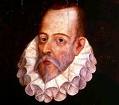



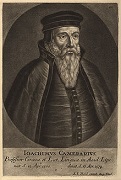
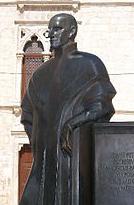
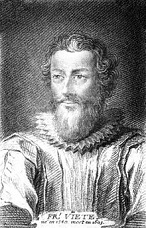

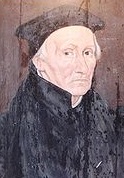




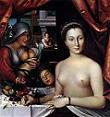
1571 On Mar. 14 after abdicating and becoming the first prince of Transylvania last year, John II Sigismund Zapolya (b. 1540) dies, and Roman Catholic Stephen (Stefan) Bathory (Báthory) (1533-86) becomes prince of Transylvania, followed on May 1, 1576 by king of Poland and grand duke of Lithuania (until Dec. 12, 1586). In Mar. Elizabeth I tells her council that she intends to marry Duke Henry of Valois (1551-89), causing Lord Burghley to declare that this will make "the Pope's malice vanish away in smoke"; by Sept. despite Catherine de' Medici sending two special envoys, the marriage negotiations fail because Henry won't give up his Roman Catholic faith and/or everybody thinks Elizabeth is too old for him. On Apr. 2 the earl of Lennox lays siege to Castle Dumbarton, and on Apr. 7 John Hamilton is hanged for Darnley's murder; Lennox is assassinated (shot) on Sept. 4, and James VI's guardian John Erskine, Earl of Mar (1531-72) is named regent (until 1572). On May 15 the Furmint (Lat. "froment" = wheat-gold color) grape is first mentioned as growing in the Hetszolo Vineyard in Tokaj, Hungary. On June 24 the Spanish under conquistador Miguel Lopez de Legazpi capture the Muslim-controlled city of Manila (modern-day pop. 1.8M/12.8M), and make it their new Philippine capital. On June 27 after lobbying by Welsh lawyer-clergyman Hugh Price (1495-1574), Elizabeth I founds Jesus College at Oxford U. for the education of Protestant clergymen. On Aug. 3 after an 11-mo. siege, 70K Turks capture Famagusta, capital and chief city of Cyprus, and massacre its pop. On Sept. 3 after he is discovered sending money and ciphered letters to Mary Stuart, Thomas Howard, 4th duke of Norfolk is arrested, and put in the Tower on Sept. 7, then confesses on Oct. 11 to avoid torture; on Oct. 24 Mary's envoy the Bishop of Ross is put in the Tower and tortured, giving up Mary, Norfolk, the Earl of Southampton, the Earl of Arundel, Lord Cobham and Lord Lumley; Arundel lives but never clears his name; Southampton spends a year in the Tower; the Spanish ambassador is expelled; Ridolfi safely flees; from now on Elizabeth will never free Mary or restore her to the Scottish throne, and recognizes James VI as Scottish king; the affair drives her to revive the match with Duke Henry of Anjou, but he is having an affair with Mademoiselle de Chateauneuf and trying to be crowned king of Poland, so Catherine de' Medici suggests her puny 17-y.-o. pockmarked (with a funny nose and slightly deformed spine) son Hercules Francois, Duke of Alencon (Alençon) and Anjou (1555-84), who is sympathetic toward the Huguenots, has ambitions of leading the Protestants against the Spanish in the Netherlands, and can grow a beard to help hide the pockmarks, but despite he being a young stud and she a Cougar, he is such an immature twerp that she rejects him? On Sept. 4 Scottish regent the Earl of Lennox is murdered at Stirling Castle in revenge for his hanging of Archbishop Hamilton, and replaced by the Earl of Mar, which by luck is Elizabeth I's favorite. On Oct. 7 after Pope (1566-72) Pius V (Antonio Michele Ghislieri) (1504-72) signs the Holy League Alliance with Spain and Venice, 200 Spanish and Venetian galleys under 24-y.-o. Don John (Juan) of Austria (1547-78) (half-brother of Philip II of Spain, and illegitimate son of HRE Charles V) defeat the 230-galley Turkish fleet at the 6-hour Battle of Lepanto (Naupactos) in a bay at the mouth of the Gulf of Patras (entrance to the Gulf of Corinth) off Lepanto in W Greece (biggest naval battle in Mediterranean history?) (last major naval battle fought exclusively by rowing vessels?) just before 5 p.m., with 12K Christian casualties vs. 6K Muslim POWs taken and 30K of 56K KIA, incl. Turkish fleet grand adm. Muezzinzade Ali Pasha aboard his ship, becoming the first defeat of Muslims by Christians on the sea, a big V for Western military technology, and the beginning of the end of the Ottoman naval threat in the C Mediterranean, destroying the myth of their invicibility, although both fleets are heavily damaged and the Ottomans speedily rebuild their fleet and restore their supremacy on the W and E sides; Spanish writer Miguel de Cervantes Saavedra (1547-1616) is wounded in the battle, calling it "the most noble and memorable event that past centuries have seen or future generations can ever hope to witness"; Italian-born Muslim convert Ottoman adm. Uluj Ali Reis (Giovanni Diongini Galeni) (1519-87) captures the flagship of the Maltese Knights along with its great banner before gathering the fleet's remaining 87 ships and returning to Constantinople, getting promoted on Oct. 29 to grand adm.; since most of the Ottoman sailors had been sent home for winter and the rest were involved in political squabbles, and the Christians outnumbered them, it was an overrated V for Christ?; the failures of war galleys cause their use to decline as better designs are sought and bigger vessels built; many Muslim POWs are taken and used to man Christian oars; bald, white-bearded future saint Pope Pius V allegedly sees the V in a vision in Rome at the exact moment it happens, ascribing it to intercession by the Virgin Mary, establishing the Feast of Our Lady of Victory (the Holy Rosary) on Oct. 7, even though he isn't informed of it officially until Oct. 21? - Playtex, who knows you like we do? On Dec. 19 glammed glowing William Shakespeare, er, Edward de Vere, 17th Earl of Oxford (1550-1604), known for his slender figure and hazel eyes, good classical education, and skill in dancing, horsemanship, and playing the virginals marries Anne Cecil (1556-89), daughter of Lord Burghley at Westminster Abbey, and Queen Elizabeth I attends, giving him the nickname of "her Boar"; expected to be a court favorite, with the queen "delighting more in his personage and his dancing and valiantness than any other", he ends up going for overseas adventure. After coming under the influence of Adm. Gaspard de Coligny, Charles IX of France and the Huguenots reconcile, and a marriage is arranged between Charles IX's sister Margaret of Valois and Huguenot leader Henry of Navarre (future king Henry IV), setting the wedding for next Aug. 18. Sir William Cecil becomes Lord Burghley, with Elizabeth I uttering the soundbyte: "No prince in Europe hath such a counselor." Incan king Tigu Cusi (b. 1535) dies, and Tupac (Túpac) Amaru (Thupa Amaro) (1545-72) succeeds him, deciding to avoid further contact with the Spics, er, Spaniards? - if he won't come to them, they'll go to him? Moscow is devastated by a fire. Francis Drake, known as "El Draque" to the Spanish attacks Panama; Philip II offers a reward of 20K ducats for his head. The English Parliament forbids the export of wool from England, and also enforces subscription to the Thirty-Nine Articles of 1563 by the English clergy. Sir Humphrey Gilbert (1539-83), half-brother of Sir Walter Raleigh, who fought in the war with France in 1562-4, was commissioned a capt. in the English army in Ireland in 1566, unsuccessfully petitioned the queen to be allowed to find the Northeast and Northwest Passages in 1566-7, was appointed gov. of Munster in 1569, and knighted in 1570 is elected to Parliament from Plymouth. Elizabeth I gets a Mandatory Woollen Cap Law passed requiring everybody over age six to wear a woollen cap on Sundays and holidays in order to help England's wool trade; of course, the upper classes are exempt. The Gen. Protestant Synod of La Rochelle goes with Theodore Beza's suggestion that church discipline should not be abolished, while civil govt. should not be acknowledged as the head of the church, pissing off Paris minister Jean Morel and French philosopher Pierre Ramus; the Zwinglian doctrine of the Lord's Supper is rejected in favor of Calvin's "substance of the body of Christ". Money-for-nothing-and-chicks-for-free slaver John Hawkins (1532-95) plays double agent for Elizabeth I with the Spanish, pretending to be in on the Ridolfi plot to help foil it, as well as pump info. about the big coming invasion, for which he is rewarded by becoming an MP this year, followed by treasurer and comptroller of the Royal Navy from 1573-89, which allows him to improve English ships and raise sailor pay, almost getting canned in 1583 for being too good - the money's all right, the hours' all right, it's just a little wind? Kremenchug in the Ukraine on the Dnieper River 160 mi. SE of Kiev is founded. Spanish explorers in Mexico discover the wild turkey, and carry some to Europe, so that the Pilgrims are familiar with them before they arrive in America in 1620. Oxford U. and Cambridge U. are incorporated and reorganized by act of Parliament to put them on a Protestant rather than Roman Catholic foundation regarding land and revenues. Oda Nobunaga battles the militant Tendai Buddhists, destroying their main center at Mt. Hiei NE of Kyoto and killing thousands of monks. The Worshipful Co. of Blacksmiths livery co. in London is incorporated for blacksmiths, gunsmiths, clockmakers, and spurriers, later becoming the Blacksmiths and Joiners Cos. The Bibliotheca Laurenziana in Florence opens to the public. Hear it for Harrow? Harrow School at Harrow on the Hill, Middlesex (North West London), England is founded by John Lyon (-1592) of Preston under a royal charter; in 1590 its statutes provide for the education of 30 poor boys of Harrow parish, with two-thirds of his fortune left in his will; by the 1660s "foreign" (nonparish) paying scholars are admitted, and it goes on to graduate big names incl. Sir Robert Peel, Sir Winston Churchill, Lord Byron, Anthony Trollope, Richard Brinsley Sheridan, and Lord Palmerston. Giovanni Pierluigi da Palestrina is appointed master of music at Cappella Giulia in Rome, and in conjunction with Orlando di Lasso the the vocal polyphonic a cappella style reaches its apex. The Bible becomes available in Portuguese. Architecture: Andrea Palladio designs the Loggia del Capitanio in Vicenza. Guadalajara Cathedral in Mexico is begun (finished 1618). Inventions: The Strasbourg Cathedral Astronomical Clock, designed by Conrad Dasypodius (1530-1600) is begun by brothers Isaac Habrecht (1544-1620) and Josias Habrecht (1552-75) from Schaffhausen, becoming the flagship of math, physics, and scientific know-how (finished 1574) (replaced 1842). Science: English mathematician Leonard Digges (1520-59) (father of astronomer Thomas Digges) invents the Theodolite for surveying. French mathematician Francois Viete (Viète) (Franciscus Vieta), Seigneur de la Bigotiere (Bigotière) (1540-1603) pub. his first mathematical work Francisci Vietœi universalium inspectionum ad canonem mathematicum liber singularis, a book of trigonometry, containing many sine and cosine formulas, and making use of decimal fractions; he then gets into codebreaking for Henry III and Henry IV during the Wars of Religion while working on his Analytical Art (New Algebra) (Species Logistic) (The Logic of Species), becoming the first to use letters as parameters in algebraic equations, discovering Vieta's formulas relating the coefficients of a polynomial to sums and products of its roots; in 1593 he pub. the first infinite product in an expression for pi as 2 x 2/sqr(2+sqr(2+sqr((2+sqr((2+sqr(2+)...); in modern times the technique of Vieta Jumping is developed to solve mathematical olympiad problems; Rene Descartes builds on Viete's work. George Buchanan (1506-82), A Detection of the Doings of Queen Mary - talk about burning feminine itch? Joachim Camerarius the Elder (1500-74), Short and Ordered Considerations for the Formation of a Well-Ordered Medicine; calls for reforms in Nuremberg to authorize physicians to oversee the work of apothecaries and give them a monopoly on diagnosis, starting a war. Andrea Cesalpino (1519-1603), Quaestionum Peripateticarum; contains observations on the movement of blood and the heart, confusing circulation with evaporation and condensation. Thomas Digges (1546-95), Pantometria; manual of surveying, pitching his father Leonard Digges (1520-59) as the inventor of the reflecting and refracting telescopes between 1540-59; too bad, he brags too much and claims that he could "read letters, numbered pieces of money with the very coin and superscription thereof, cast by some of his friends of purpose upon downs in open fields, but also seven miles off declared what hath been done at that instant in private places." John Kearney (treasurer of St. Patrick's Cathedral, Dublin), Aibidil Gaoidheilge agus Caiticiosma (Alphabet of the Irish language and Catechism; That is, Christian instruction or teaching along with certain articles of the Christian rule that are proper for everyone who would be obedient to the law of God and the Queen in this kingdom) (June 20) (Dublin); Protestant primer; the first book printed in the Irish language in Ireland. Hugh Latimer (1485-1555), Frutefull Sermons. Georgette de Montenay, Emblemes, ou Devises Chrestiennes. Philippe de Mornay (1549-1623), Dissertation sur l'Eglise Visible. Franciscus Patricius (1529-97), Discussiones Peripateticae (Discussionum Peripateticorum) (15 vols.) (Basel); claims that Aristotle's teachings directly oppose Christianity, while Plato's foreshadow it, attacking Aristotle's life and character and the authenticity of his works, attempting to refute his doctrines theologically. Music: Andrea Gabrieli (1520-86), Conzoni Alla Francese. Art: Francois Clouet (1510-72), Diane de Poitiers. Tintoretto (1518-94), The Origin of the Milky Way. Titian (1477-1576), Christ Crowned with Thorns. Paolo Veronese (1528-88), Art in San Sebastiano, Venice. Poetry: Fernando de Herrera (1534-97), Ode on the Naval Battle of Lepanto; Ode on Don John of Austria; his masterpieces, causing him to be called El Divino. Births: Austrian field marshal Baron Charles Bonaventure (Karel Bonaventura) de Longueval, Count of Bucquoy (d. 1621) on Jan. 9 in Arras, France. English scholar (founder of the Cotton Library) Sir Robert Bruce Cotton, 1st Baronet of Connington (d. 1631) on Jan. 22 in Denton, Huntingdonshire; descendant of Robert the Bruce; educated at Westminster School, and Jesus College, Cambridge U.; knighted in 1603 after divising the title of baronet to help James I to raise funds. Persiah Safavid shah #5 (1587-1629) Abbas I (the Great) (d. 1629) on Jan. 27 in Herat; 3rd son of Mohammad Khodabanda and a Georgian mother. German Lutheran composer-musicologist Michael Praetorius (Schultze) (d. 1621) on Feb. 15 in Creuzburg. English economist (mercantilist) Thomas Mun (d. 1641) on June 17 in London. Italian #1 Baroque painter Michelangelo Amerighida Merisi da Caravaggio (d. 1610) on Sept. 29 in Milan; teacher of Jusepe de Ribera (1591-1652); rival of Annibale Carracci (1560-1609); known for his chiaroscuro technique, great success, and nasty dueling habit. Spanish Baroque dramatist-poet (#2 of the Golden Age) and priest Tirso de Molina (Gabriel Tellez) (d. 1648) in Oct. in Madrid; disciple of Lope de Vega. German world-shaking astronomer-astrologer-mathematician Johannes Kepler (d. 1630) on Dec. 27 [Capricorn] in Weil der Stadt on the edge of the Black Forest; born almost exactly 1 cent. after Nicolaus Copernicus (b. Feb. 19, 1473). English explorer (founder of the Va. Co. of London) Bartholomew Gosnold (b. 1607) in Grundisburgh, Suffolk; educated at Cambridge U. Spanish Jesuit missionary to China Father Diego de Pantoja (Didaco Pantoia) (d. 1618) in Apr. in Valdemoro. Polish mentor Nicolaus Copernicus (b. 1473); asst. of Tycho Brahe; court mathematician to HRE Rudolf II. Japanese samurai Hasekura Rokuemon Tsunenaga (d. 1622) in Sendai. Persian Twelver Shiite Sufi philosopher Mulla (Molla) Sadra (Sadr al-Din Mohammad ibn Ibrahim ibn Yahya Wawami Shirazi) (d. 1640) in Shiraz. Korean king (1608-23) Kwanghaegun (d. 1641). Deaths: Italian sculptor Benvenuto Cellini (b. 1500) on Feb. 13 in Florence. Italian organist-composer Francesco di Bernardo Corteccia (b. 1504). German prince-elector of Brandenburg (1535-71) Joachim II Hector (b. 1505) on Jan. 3 in Kopenick Palace. English diplomat Sir Nicholas Throckmorton (b. 1515) on Feb. 12. Polish king Sigmund II (b. 1520); last of the Jagellon Dynasty. Incan ruler Titu Cusi (b. 1529) in Vilcabamba (pneumonia). Hungarian king (1540-70) John II Sigismund Zapolya (b. 1540) on Mar. 14 in Gyulafehervar, Romania.
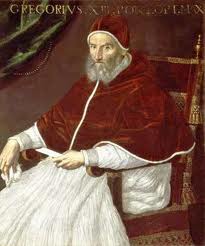




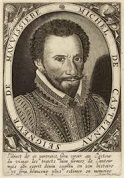



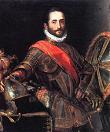


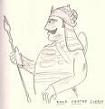
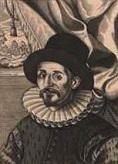





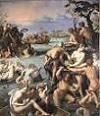
1572 On Jan. 1 the earl of Leicester presents Elizabeth I with a jewelled bracelet set with a tiny timepiece, the first known wristwatch. On Jan. 16 the duke of Norfolk is tried by a 26-man jury in Westminster Hall and found guilty of 13 counts of high treason. On Feb. 28 Maharana Udai Singh II (b. 1522) dies, and on Mar. 1 his son Pratap Singh I (1540-97) becomes maharana of Mewar in NW India (until 1597), going on to become its greatest hero. The Low Countries are a sea of blood and flames because of their love of Christ? On Apr. 1 the Dutch Watergeuzen (Sea Buggers, er, Beggars) of William I the Silent of Orange capture Brielle in S Holland, and for the first time stay and occupy it, and the idea catches on, with most of the cities in Holland and Zeeland soon falling into their hands, with the exception of the capitals Amsterdam and Middelburg (capital of Zeeland); the captured cities then convene an estates-gen. in Dordrecht, which confirms William I as stadtholder (gov.), who goes on to score several land Vs at Deventer, Mons, Roermond, Leuven, and Dendermonde at the confluence of the Dender and Scheldt Rivers in Belgium; the silver Geuzen medal is struck celebrating the capture of Brielle; virulent anti-Catholic polemicist Philip van Marnix, author of the Dutch nat. anthem Wilhelmus van Nassouwe (in which the first letters of the couplets form the name "Willem van Nassov") is sent by William I as his rep. to the estates-gen. On Apr. 19 hoping to isolate Spain, England, and France conclude the Treaty of Blois, promising to provide each other with military-naval assistance against their common enemies, incl. Spain and the Netherlands, which ends England's isolation along with French support of Mary Stuart; Elizabeth I also hopes this will prevent France from invading Flanders; meanwhile Catherine de' Medici pushes her teenie son Duke Francois of Alencon on Elizabeth I harder. On May 1 Pope (since 1566) Pius V (b. 1504) dies with sweet dreams of Lepanto dancing in his head (canonized in 1712) (no need for any more Piuses until 1775), and on May 14 Ugo Buoncompagni is elected Pope (#226) Gregory XIII (1502-85); his Buoncampagni family patronizes female Bolognese painter Lavinia Fontana (1552-1614), daughter of Prospero Fontana - it sure looks good on you, and when you smile for the camera I know I love you better? On May 8 the English Parliament meets to demand that Mary, Queen of Scots be executed, but Queen Elizabeth I nixes them, saying she couldn't "put to death the bird that, to escape the pursuit of the hawk, has fled to my feet for protection"; on May 26 Parliament passes a milder bill listing Mary's offenses, and depriving her of all claims to the English throne, making it an offense to proclaim or assert it; the queen vetoes it, and writes a sonnet about her, later pub. by George Puttenham in The Art of Poesie (1589); "The Daughter of Debate, that eke discord doth sow,/ Shall reap no gain where former rule hath taught still peace to grow/ No foreign banish'd wight shall anchor in this port..." In May a French nat. Protestant synod is held in Nimes in S France. On June 2 (7 a.m.) (after her cousin the queen delayed the execution, originally set for Jan. 21, and visited the night before to make sure he was comfy?) Thomas Howard, 4th duke of Norfolk (b. 1536) is beheaded on Tower Hill after declaring that he had never been a papist, and that "Since the beginning of our most gracious Queen's reign I am the first, and God grant I may be the last"; he refuses a blindfold, and is buried before the altar of the Chapel of St. Peter ad Vincula in the Tower between his cousins Anne Boleyn and Catherine Howard; his son Philip Howard, 20th Earl of Arundel (1557-95) is prevented from inheriting his dukedom, but he makes out okay as his maternal grandfather croaks in 1580, and becomes the 1st, 13th or 20th earl of Arundel, depending on whom you talk to. In June Francis Drake sacks Nombre de Dios on the Isthmus of Panama, and next Apr. ambushes the Silver Train, a mule convoy carrying precious metals. On July 5 emperor (since Feb. 4, 1567) Longqing (b. 1537) dies, and on July 19 his 3rd son Wanli ("ten thousand calendars") (Zhu Yijun) (1563-1620) becomes Ming emperor #13 of China (until 1620); beginning of the Wan Li Period in Porcelain (ends 1619). On July 7 king (since Apr. 1, 1548) Sigmund II Augustus (b. 1520) of Poland dies childless, and the Jagiellon line comes to an end; the Estates of Poland declare the monarchy elective, and next May 16 Duke Henry of Valois becomes king Henry III (1551-89) of the Polish-Lithuanian commonwealth (until May 12, 1575), becoming shocked at Polish culture incl. taking shit outside castle walls, taking baths with regulated hot and cold water, and eating with forks, which he takes back to France - and deep down in your heart, you know it ain't right? On Aug. 18 Protestant Henry of Navarre (b. 1553) (future Henri IV of France) marries Charles IX's sister Marguerite (Margaret) de Valois (1553-1615) (until 1599) at Notre Dame Cathedral in Paris, and he becomes King Henry III of Navarre, the first member of the House of Bourbon to achieve royal rank, pissing-off the Roman Catholic Guise party, backed by Catherine de'Medici, and causing them to attempt to assassinate Huguenot leader Adm. Gaspard de Coligny (1519-72)) on Aug. 22 for his influence over Charles IX, which fails, only shattering his left elbow and tearing a finger from his right hand and causing riots in Paris; on Aug. 23/24 (Aug. 13/14 Old Style) (Thur.) (night) the Fourth French War of Religion (ends Aug. 25, 1573) begins with the St. Bartholomew's Day Massacre, approved by Charles IX of France and Queen Mother Catherine de' Medici; it starts out as a surgical assassination of Adm. Gaspard de Coligny and other Huguenot leaders in Paris, with Coligny killed in his house by Duke of Guise henchman Charles Danowitz AKA Karel Janovic and hung from a gibbet by one foot before being beheaded, after which the king orders all Huguenots cleared from Paris, but it gets out of hand, and 2K-4K Protestants are murdered, exploding into a nat. killing spree as over 100K French Protestants are murdered like maggots by French Catholic mobs on a mission from God to exterminate the "Lutheran scum" (Henri II); Henry of Navarre saves himself by abjuring Calvinism, and becomes a virtual prisoner until 1576, after which he returns to practicing it; the news cause Philip II to dance for joy, Mary Stuart to stay up all night celebrating, and Pope Gregory XIII to express satisfaction at the killing of heretics; Sir Francis Walsingham hides in Paris during the massacre and barely escapes, sending a message to Elizabeth I which arrives on Sept. 3 and causes her to go into mourning and postpone plans for marrying the duke of Alencon, who had nothing to do with the massacre and speaks out against it; Catherine's internat. rep. plummets and never recovers; Walsingham is put in charge of England's security, and immediately identifies Mary Stuart, Queen of Scots as public enemy #1; a mass exodus begins of Huguenots from France to London, Geneva, Amsterdam et al., all telling horror stories; on Sept. 5 French ambassador Fenelon tells Elizabeth that the massacre as an "accident", and makes up a story about a Protestant plot to overthrow Charles IX; in Oct. Charles sends Michel de Castelnau, Sigeurde la Mauvissiere (Mauvissière) (1520-92) to London to ask Elizabeth to be godmother to his infant daughter as a gesture, even though Liz is excommunicated and the daughter is a Catholic; Liz responds by sending the Earl of Worcester with a gift of a gold salver, which is stolen by pirates on the Channel; after the massacre causes cries for Mary Stuart's head, on Sept. 10 Elizabeth secretly proposes to the Earl of Mar to take her back and try her for Darnley's murder in the hopes she will be executed, but the plan falls through when Mar demands the English admit to wanting her dead; on Nov. 24 Mar dies of natural causes, and Mary's enemy James Douglas, 4th Earl of Morton (1516-81) is named regent (until 1580); the countess of Mar gains custody of James VI. On Sept. 28 Gidobaldo II della Rovere (b. 1514) dies, and his son Francesco Maria II della Rovere (1549-1631) becomes the last duke of Urbino (until Nov. 3, 1621). In Oct. the Dutch Protestant rebel army of William I the Silent of Orange gets pushed by the Spanish into the harbor town of Enkhuizen in N Holland after promised French Huguenot support evaporates, allowing the Spanish army under the Duke of Alva's super-cruel 2nd son Don Fadrique (Don Frederick) Alvarez (Álvarez) de Toledo, 4th Duke of Alva (Alba) (1537-83) to sack several rebel cities, massacring the pops. of Mechelen (Mechlin), Zutphen (Nov. 17), and Naarden (Dec. 1); meanwhile on July 4 the formerly pro-Spanish city of Haarlem has seen enough and declares for the rebels, and on Dec. 11 the Spanish Siege of Haarlem (ends July 13, 1573) begins, continuing through the winter; on Dec. 19 the Spanish fire 625 artillery shots at its weak defensive wall, causing them to have to build a new one fast; Sir Humphrey Gilbert is sent with an English force; Dutch pigeons carry letters during the siege of Haarlem; Kenau Simonsdochter Hasselaer (1526-88), daughter of the mayor leads her own troop of 300 women, causing the Dutch word "kenau" to come to mean a bossy bitch. On Nov. 9 the Siege of Sancerre in C France begins with a surprise attack by the Roman Catholics, with the Huguenot pop. holding out in the fortified hilltop stronghold for almost 8 mo. and losing 500 (incl. most of the children) to famine plus 600 when a wall collapses until the siege is abandoned next Aug. 25, becoming celebrated as the Protestant version of the 70 C.E. Siege of Jerusalem; "We light here, we fight here, go assassinate elsewhere." Rudolf II is crowned king of Hungary - I think of it as a blue ribbon from my old man? The Saxe-xyz duchies are born, later putting monarchs on the British throne? After the HRE gets fed up with Duke Johann Wilhelm of Saxe-Weimar (1530-73) for supporting the French king, the Diet of Speyer proclaims the Division of Erfurt, dividing the Ernestine duchy of Thuringia, Saxony between him and his sons, leaving Johann Wilhelm with Weimar, Altenburg, Gotha and Meiningen, and giving the duchy of Saxe-Coburg-Eisenach to his eldest son Johann Casimir, Duke of Saxe-Coburg (1564-1633) (later known for creating a cultural and building boom in Coburg while sponsoring witch-burnings) and Johann Ernst, Duke of Saxe-Eisenach (1566-1638), who in 1596 split it up, with Hildburghausen being shared; Johann Wilhelm dies next year, leaving his share to his young son Frederick Wilhelm I, Duke of Saxe-Weimar (1562-1602) (11th great-grandfather of Elizabeth II of Britain), from which the house of Saxe-Gotha-Altenburg later splits in 1672. Handsome studly Walter Devereux (1541-76) is made a knight of the garter, and created 1st earl of Essex for his help in suppressing the Northern Rebellion. Lord Burghley becomes lord high treasurer of England (until 1598). Ivan IV the Terrible dismisses the Oprichniki - for plotting against him? Mercury is discovered in Peru, which is used to refine silver, leading to a flood of silver into Spain, causing happy Philip II to increase military expenditures using galleon futures to get credit from Genoese bankers. William Byrd (1540-1623) (organist of Lincoln Cathedral from 1563) (a Roman Catholic) and his former teacher Thomas Tallis (1505-85) become organists at the Chapel Royal; in 1575 they are granted a 21-year monopoly in music printing in England, and dedicate Cantiones Sacrae, a collection of motets to Queen Elizabeth I; when Tallis dies in 1585 Byrd keeps the monopoly - holding back music in England for almost 50 years like Bill Gates later did with software? Italian violin maker Andrea Amati (1505-78) of Cremona begins making the studly cello Il Re (The King) for Charles IX of France. The Society of Antiquaries of London is founded in England by Canterbury archibishop Matthew Parker, who is always digging around trying to find evidence that the Roman Catholic Church sucks, although they already believe that if you stack the entire Catholic hierarchy on one pan of a scales, they will be outweighed by the Bible alone. The Spanish Riding School is founded in Vienna, becoming the oldest classical dressage riding school to survive to modern times, featuring the Lipizzaner (Lipizzan) Stallions. The mayor of London bans plays and playhouses to protect against the plague, and in 1575 he bans players too, causing playhouse owners to begin building outside London's city limits. Science: Danish metal-nosed astronomer Tycho Brahe (1546-1601) (known for keeping a tamed elk and a dwarf named Jepp as a jester) discovers a supernova ("New Star") in the constellation Cassiopeia, startling the establishment, who believe that the heavens are unchanging; the discovery wows Danish king Frederick II, who pays for two new observatories for him; he also produces the first star catalog, correcting grave errors in the Alfonsine and Prutenic Tables; meanwhile English astronomer Thomas Digges (1546-95) uses the parallax of the supernova to conclude that it has to lie beyond the orbit of the Moon, shocking the establishment, which believes that no change can take place among the fixed stars. Nonfiction: Anon., Artis Auriferae Quam Chemium Vocant ' (Basel); one of the earliest books on alchemy. Rafael Bombelli (1526-72), Algebra; shows the use of continued fractions. Annibale Caro, Lettere Familiari; history of the Tuscan lit. language in Italy. Henri Estienne, Thesaurus Linguae Graecae. John Knox (1505-72), An Answer to a Scottish Jesuit (last book). Matthew Parker (1504-75), De Antiquitate Britannicae Ecclesiae. Jean de Serres, Commentarii de Statu Religionis et Republicae; on the French wars of religion. Art: Alessandro Allori (1535-1607), The Pearl Fishers. Poetry: Luis Vaz de Camoes (Camoens) (1524-80), Os Lusiadas (The Lusiads); 1,102 stanzas about Vasco da Gama's voyages; written in exile in Macau; becomes the Portuguese nat. epic. George Gascoigne (1539-78), A Hundredth Sundry Flowres. Pierre de Ronsard (1524-85), La Franciade. Novels: Guillaume de Salluste, Sieur Du Bartas (1544-90), Judith. Births: English "Every Man in His Humour", "Volpone, or The Foxe", "The Alchemist" lyric poet-dramatist-critic (English poet laureate #1) Benjamin "Ben" Jonson (d. 1637) on June 11 in Westminster, London; posth. son of an impoverished gentleman; #2 English playwright after William Shakespeare during the reign of James I, with his vast classical education and appetite for controversy influencing poets in the Jacobean (1603-25) and Caroline (1625-42) eras. Irish penultimate king of Tyrconnell (1592-1602) "Red" Hugh Roe O'Donnell (d. 1602) on Oct. 30 in Lifford, County Donegal; son of Sir Hugh O'Donnell (-1600) and 2nd wife Ineen Dubh; elder brother of of Rory O'Donnell (Red Hugh II) (1575-1608); son-in-law of Hugh O'Neill, earl of Tyrone (1550-1616). Japanese emperor #107 (1586-1611) Go-Yozei (Kazuhito) (Katahito) (d. 1617) on Dec. 31; eldest son of Prince Masahito, 5th son of Ogimachi (1517-93). English Gunpowder Plotter Thomas Wintour (d. 1606). Transylvanian prince (1588-1613) Sigismund (Zsigmond) Bathory (d. 1613); nephew of Stephen Bathory (1533-86). German "Uranometria" astronomer-atty. Johann Bayer (d. 1625) in Rain, Bavaria. English Jacobean "For whom the bell tolls", "No man is an island" metaphysical poet John Donne (d. 1631) on Jan. 22 in London; great-great-nephew of Sir Thomas More (1478-1535); educated at Hart Hall (Hertford College), Oxford U., Cambridge U., and Lincoln's Inn; born to a recusant Roman Catholic family, he converts to the Church of England, becoming dean of St. Paul's Cathedral in 1621. Czech defenestrated nobleman (Protestant-to-Roman Catholic convert) Count William Slawata (Schlabata) (Vilem Slavata) of Chlum (d. 1652) on Dec. 1 in Cestin (near Kutna Hora). Dutch submarine inventor Cornelis (Cornelius) Jacobszoon Drebbel (d. 1633) in Alkmaar. Lebanese Druz prince Fakhr al-Din II the Great (d. 1635). English Puritan divine "Roaring" John Rogers (d. 1636) in Moulsham, Essex; educated at Emmanuel College, Cambridge U. German scientist Daniel Sennert (d. 1637). Greek ecumenical patriarch of Constantinople Cyril Lucaris (Lucar) (d. 1638); gets influenced by Calvinism and advocates a Greek vernacular trans. of the Bible. Welsh Tudor-Stuart madrigal composer Thomas Tomkins (d. 1656) in St. David's, Pembrokeshire; Deaths: Ottoman legal scholar and grand mufti (1545-74) Ebussuud Efendi (b. 1490) on Aug. 23. Ottoman naval officer-artist Nigari (b. 1492); leaves color portraits of Suleiman the Magnificent, Selim II, and Admiral Barbarossa II. Italian painter Giulio Campi (b. 1502). Spanish conquistador Miguel Lopez de Legazpi (b. 1502). Italian painter Agnolo Bronzino (b. 1503) on Nov. 23 in Florence. Scottish "hellfire and damnation" preacher John Knox (b. 1505) on Nov. 24 in St. Andrews, where he retired after a paralytic stroke; dies pointing his finger toward heaven after somebody asks him "Have ye hope"?; his tombstone reads "I.K. 1572" (Ioannes Knox); he spawns a long line of Scottish ministers. Swiss historian Aegidius Tschudi (b. 1505) on Feb. 28. Italian cardinal Ippolito II d'Este (b. 1509) on Dec. 2 French portrait painter Francois Clouet (b. 1510). Italian architect Galeazzo Alessi (b. 1512). Italian duke of Urbino (1539-74) Guidobaldo II della Rovere (b. 1514) on Sept. 28 in Pesaro. French Huguenot adm. Gaspard de Coligny (b. 1519) on Aug. 24 in Paris (assassinated). Polish king (1548-72) Sigismund II Augustus (b. 1520) on July 7 in Knyszyn. French painter Francois Clouet (b. 1522). Scottish regent (1571-) John Erskine, 1st earl of Mar (b. 1531) on Oct. 28 in Stirling after a banquet at Dalkeith Palace given by the earl of Morton (poisoned?). Jewish mystic Rabbi Isaac Luria (b. 1534) on July 25 in Safed, Palestine. English wannabe Thomas Howard, 4th duke of Norfolk (b. 1536) on June 2 (beheaded). Chinese Ming emperor #12 (1567-72) Longqing (b. 1537) on July 5.



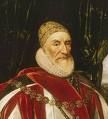
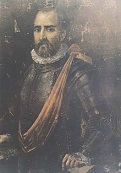
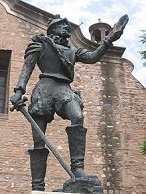

1573 On Jan. 1 Scottish regent James Douglas, earl of Morton sends Sir William Drury to lay seige to Edinburgh Castle, and secy. of state William Maitland again becomes the queen's champion, defending the castle along with Sir William Kirkcaldy of Grange (1520-73); too bad, in May they are forced to surrender, and Maitland dies in prison, while Kirkcaldy is hanged on Aug 3. On Jan. 1 a revolt against duke Guidobaldo II della Rovere of Urbino (d. 1574) over his excessive taxes is bloodily suppressed. On Mar. 7 the Peace of Constantinople ends the war between Venice and Turkey; Venice recognizes the Ottoman conquest of Cyprus, with only Crete (Candia) and the Ionian Islands left in their once great eastern empire; the rebuilt Ottoman navy ravages the coasts of Sicily and S Italy. In Mar. the English trade embargo on Spain is lifted. Rock 'em, rack 'em and shellac 'em? On Mar. 29 after sieging Haarlem since Nov., the pro-Spanish Amsterdam army cuts off the Haarlemmermeer Lake, causing it to begin to starve, which causes the mad pop. to murder several pro-Spanish POWs on May 27; on July 13 Haarlem surrenders to the Duke of Alva after 7 mo., and the pop. saves itself with a 240K guilder ransom, while the defending army is slaughtered and the city has to host a Spanish garrison; the Spanish lose a total of 12K men; although it is a V for the Spanish it convinces the Dutch rebels that the Spanish can be beat; Alva finally sneaks out of the Netherlands (Brussels) to elude his creditors, after pillaging the towns of Mons, Malines, Zutphen, and Maarden, boasting that he had executed 18.6K heretics during his six years there, incl. 800 in one "holy week" - the original holy no-fault insurance? On Apr. 14 Elizabeth I of England writes the soundbyte: "We are given to understand that a nobleman named 'Sorley Boy' [MacDonnel] and others, who be of the Scotch-Irish race", becoming the first known reference to the Scotch-Irish (Ulster Scots) from NE Ireland. In Apr. the gov. of Asuncion sends Spanish conquistador Juan de Garay (1528-83) with 80 men on an expedition up the Parana River, founding the city of Santa Fe de la Vera Cruz (modern-day pop. 450K) in modern-day NE Argentina near the junction with the Cayasa River, later moving after constant flooding to the junction near the Salado River 106 mi. N of modern-day Rosario; in 1576 Garay is appointed gov. of Asuncion. On May 11-15 Duke Henry of Valois is elected king of Poland, and in July the Edict of Boulogne (Peace of La Rochelle) is signed by Charles IX in Chateau de Madrid in Bois de Boulogue, ending the Fourth French War of Religion (begun 1572), with the Huguenots (what's left of them) granted an amnesty but with severely curtailed rights, with freedom to worship only in La Rochelle, Montauban, and Nimes, and only in their homes; assemblies for the purpose of marriage and baptism can be presided over certain Protestant nobles, with a max of 10 attendees outside the family - is chateauneuf for him? On July 6 after being appointed corregidor of Potosi, Peru in 1571, and commissioned by the gov. of Tucuman Province to explore NW Argentina, leaving Santiago del Estero last year with 100 men and 40 supply wagons, the city of Cordoba (Córdoba), Argentina on the Suquia River in the foothills of the Sierras Chicas Mts. 250 mi. S of Santiago de Estero and 435 mi. NW of Buenos Aires (modern-day pop. 1.3M/1.5M) is founded by Spanish conquistador Jeronimo (Jerónimo) Luis de Cabrera (1528-74), who names it after his wife's birthplace of Cordoba, Spain. In July Walter Devereux, 1st earl of Essex heads a military expedition to Ireland with 1.2K men to quell a revolt by wild Ulster chieftain Shane (Sean) O'Neill the Proud (1528-67) (ends 1575); too bad, after a storm he ends up wintering in Belfast, and by spring he's down to 200 men. In Aug. before sailing back to Plymouth with his treasure, Francis Drake sees the Pacific Ocean for the first time, and brings some captured potatoes from the West Indies to Sir Walter Raleigh, who cultivates them on his estates in Virginia and Youghal, County Cork, Ireland; he also brings samples of tobacco - now millions of new Irish will sprout up, all having a bad habit, and knowing where to migrate when they overbreed? On Oct. 3 the 1568 Ottoman-Hapsburg Hungarian peace treaty is renewed. Paolo Veronose is called before the Inquisition in Rome. Francis Walsingham becomes Elizabeth I's secy. of state. The Holy League under Don John of Austria takes Tunis from the Turks for the Spanish (until 1574). The Earl of Essex attempts to establish a colony in Antrim on the NE shore of Lough Neagh; in July 1575 Essex sends Francis Drake and John Norreys to oust Scottish refugees on the reverse L-shaped Rathlin Island, massacring hundreds of men, women, and children of Clan MacDonnell. James Hepburn, 4th earl of Bothwell is placed in close confinement in Dragsholm Castle in Zealand, Denmark where he goes insane until his death in 1578. Japanese warlord Oda Nobunaga (1534-82) ushers in the Azuchi-Momoyama Period in Japan (ends 1603); the gold-splashed Momoyama (Jap. "Peach Hill") Art Period in Japan begins (ends 1615). After galleons began arriving there from Asia in 1550, causing 30 Spanish families to move there to establish a permanent base, building a port and a road to Mexico City in 1531, and the Marques Wharf between Bruja Point and Diamond Point in 1533, Spanish king Philip II declares the port city of Acapulco, Mexico (Nahuatl "Acapolco" = where the reeds are washed away) (modern-day pop. 687K) the official trading port of the Manila galleons in America, with a trading monopoly; the W end of the route in the Philippines is named Capul. Spanish viceroy Francisco de Toledo draws up rules for creation of reducciones (reductions) in South Am., self-sufficient Jesuit frontier settlements of a few thousand people each with their own churches and a barter-based economy, which become a bastion against Portuguese encroachment while stirring the jealousy of other Spanish settlers; 1.4M Indios of the former Inca Empire are resettled into 840 communities. Sir Humphrey Gilbert retires (until 1578), writing a plea to the queen to be allowed to find the NE and NW Passages (pub. 1576). William Howard, 1st Baron of Effingham (b. 1510) dies, and his son Charles Howard, 1st Earl of Nottingham (1536-1624) becomes 2nd Baron Howard of Effingham, then is made knight of the Garter next year, preferring the seafaring side of the service; he goes on to become lord high adm. under Elizabeth I, commanding the navy against the 1588 Spanish Armada - the Howard name keeps shalalaing regardless of strawberry alarm clocks? Targovishte (Bulgarian "marketplace") in Bulgaria 210 mi. NE of Sofia is first mentioned in Ottoman tax registers; by the 18th cent. it becomes a popular market for animals and craft products called Eski Cuma (Old Bazaar). Palacky U. in Olomouc, Moravia is founded by the Jesuits, becoming the 2nd oldest univ. in Czech.; alumni incl. Albrecht von Wallenstein; in the 1770s king HRE Joseph II turns it into a public univ. Joseph Scaliger begins pub. eds. of numerous Roman poets (until 1579), founding the modern scientific method of textual criticism. The first German cane sugar refinery is built in Augsburg. Capt. Francesco De Marche and Francesco Di Domenico of Bologna, Italy make the first ascent of Corno Grande, highest peak in the Italian peninsula. Architecture: Mexico City Cathedral is begun (finished 1813). Science: Constanzo Varolio (1543-75) of Italy pioneers a new method of dissecting the brain by starting at the base, and discovers the Optic Nerve and Pons. Music: Orlando di Lasso (1532-94), Patrocinium Musices. Nonfiction: Tycho Brahe (1546-1601), De Nova Stella. Francois Hofman, Francogallia; on election and deposition of kings. Heinrich Knaust (1520-80), Der Philosphischen, Hochtouren and Wunderbaren Kunst Bier zu Brauen (5 vols.); the first beermaking manual in Germany, describing 150 different beers, incl. "noble Hamburg beer the queen of all other wheat beers." Ambrose Pare (1510-90), Des Monstres; describes alleged monsters and marvels in nature - remember the frowns on the jugglers and the clowns when they did tricks for you? Poetry: Johann Fischart (1547-90), Der Flohatz; satiric poem on women. Isabella Whitney (1548-), A Sweet Nosegay, or Pleasant Posye Contayning a Hundred and Ten Phylosophicall Flowers; first woman to pub. secular poetry in English? Births: German astronomer Simon Marius (d. 1625) on Jan. 20 (Jan. 10 Old Style) in Gunzenhausen, Ansbach; spends his life in Ansbach. Belgian theologian Jacques Bonfrere (d. 1642) on Apr. 12 in Dinant. Bavarian Wittelsbach duke-elector (1597-1651) Maximilian I (the Great) (d. 1651) on Apr. 17 in Munich; eldest son of William V and Renata of Lorraine; brother of Ferdinand of Bavaria (1577-1650); educated at the Jesuit U. of Ingolstadt; husband (1595-1635) of Elizabeth of Lorraine (Renata) (daughter of Duke Charles III of Lorraine) and (1635-51) Maria Anna of Austria (daughter of HRE Ferdinand II); father of Ferdinand Maria (1636-79) by 2nd wife Maria Anna. English architect ("the English Palladio") Inigo Jones (d. 1652) (pr. IHN-ih-go) on July 15 in Smithfield, London; of Welsh ancestry. English William Shakespeare's patron (bi) Henry Wriothesley, 3rd Earl of Southampton (d. 1624) on Oct. 6 in Cowdray, Sussex; 2nd son of Henry Wriothesley, 2nd earl of Southampton (1545-81) and Mary Browne, daughter of Anthony Browne, 1st viscount Montagu (1528-92); educated at St. John's College, Cambridge U. French satirist Mathurin Regnier (Régnier) (d. 1613) on Dec. 21 in Chartres. English Gunpowder Plotter (Roman Catholic) Roger Catesby (d. 1605) in Lapworth, Warwickshire; educated at Oxford U. English archbishop of Canterbury (1633-45) William Laud (d. 1645) in Reading, Berkshire; educated at St. John's College, Oxford U. British (Welsh) vice-adm. Sir Robert Mansell (Maunsell) (Mansfield) (d. 1656) in Margam, Glamorganshire. Deaths: Spanish-born Jewish chief rabbi Radbaz (b 1479) in Safed, Palestine. Swedish Lutheran bishop (of Uppsala) Laurentius Petri (b. 1499); author of the Swedish Church Order. French chancellor Michel de l'Hopital (b. 1507) on Mar. 13 in Vignay (Bellebat?). English physician John Caius (b. 1510) on July 29 in London. English soldier William Howard, 1st baron Howard of Effingham (b. 1510). Italian architect Giovanni Sallustio Peruzzi (b. 1511). French Protestant philosopher Petrus Ramus (b. 1515) on Aug. 26; slain in the St. Bartholomew Massacre; his followers become known as the Ramists. Portuguese aristocrat Ruy Gomez de Silva (b. 1516) n July 29 in Madrid, Spain. Japanese warlord Takeda Shingen (b. 1521). Polish religious leader Peter Gonesius (b. 1525) in Wegrow (plague). Scottish secy. of state William Maitland of Lethington (b. 1525) (dies in prison). German duke (1566-72) Johann Wilhelm of Saxony (b. 1530) on Mar. 2 in Weimar. French dramatist-poet Etienne Jodelle (b. 1532) in July. Croatian humanist writer Pavao Skalic (b. 1534).







1574 In Feb. a failed coup in Saint-Germain with the aim of releasing Henry I de Bourbon, prince of Conde and Henry of Navarre (future Henry IV) from imprisonment at the royal court, along with successful Huguenot uprisings in Lower Normandy, Poitou, and the Rhine Valley lead to the Fifth War of Religion in France (ends May 6, 1576). On Mar. 8 English Capt. William Martin sieges Rockfort Castle on Clare Island in Connaught (Connacht), W Ireland, stronghold of notorious female Irish pirate Granuaile (Grainne) (Grace) O'Malley (1530-1600), and after 18 days gives up, enhancing her rep.; in 1577 she offers her services along with three galleys and 200 men to English gov. Sir Henry Sidney in Galway, but ends up getting caught raiding English lord Earl of Desmond, and imprisoned until 1581. On May 30 (St. Bartholomew's Day) Bad Boy French king (since Dec. 5, 1560) Charles IX (b. 1550) dies, and his sickly disgusting prick of a brother Henry of Valois, elected king of Poland in 1572 secretly rushes back to France 3 mo. after his coronation to become Henri (Henry) III (1551-89) (until Aug. 2, 1589), the lucky 13th (and last) Valois king of France, leaving Poland and its elective kingship for the much more cushy hereditary French throne; to stifle criticism he prohibits the age-old tradition of inserting political prophecies in almanacs - how does it feel when you're on your own with no direction home? In May after the Dutch city of Leiden joins the anti-Spanish revolt, the Spanish siege it, but it is saved when the dikes are cut, flooding the meadows and allowing William I's navy to sail in and relieve it on Oct. 3. In July the Earl of Essex resumes his military expedition in Ireland, treacherously capturing and executing O'Neill leader Sir Brian Mac Felim O'Neill of Clandeboy, then commits various other atrocities against the Scots of Rathlin Island before Elizabeth I tells him to cool it and return to England. On Aug. 17 after establishing good relations with the native Comechingones and leaving Cordoba going E and reaching the Parana River 200 mi. away and founding the Fort of San Luis near modern-day Santa Fe, Argentina, becoming the viceroyalty of Peru's first usable beachhead towards the Atlantic Ocean, jealous Capt. Juan de Garay (1528-83) from Asuncion gets Jeronimo Luis de Cabrera condemned by arbitrer Gonzalo de Abreu for insubordination, with his sentence of garoting commuted to decapitation on Aug. 17 in Lima (Santiago del Estero?). On Aug. 25 250-300 Turkish galleys with 75K-100K men under the command of Muslim convert adm. Cigalazade Yusuf Sinan Pasha (Scipione Cicala) (1545-1605) and grand adm. Uluj Ali Reis (Giovanni Diongini Galeni) (1519-87) capture the port of La Goleta in Tunisia, followed on Sept. 13 by Tunis, ending the Spanish Conquest of North Africa begun by Ferdinand II and Isabella I, and insuring Ottoman domination of the E and C Maghreb. On Nov. 22 Spanish navigator Juan Fernandez (Fernández) (1536-1602), after making repeated voyages between Panama and Peru or Chile and discovering the trade winds, shortening his sailing time so much that he ends up being tried and acquitted of witchcraft, and discovering a faster maritime route between Callao and Valparaiso that avoids the Humboldt Curent, discovers the Juan Fernandez Islands, which become a haven for pirates, incl. Alexander Selkirk; in 1966 Chile renames the islands of Mas Afuera as Alejadro Selkirk Island, and Mas a Tierra as Robinson Crusoe Island; meanwhile in 1575 Fernandez allegedly discovers the continent of Australia and/or New Zealand. Pierre qui roule n'amasse pas mousse? On Dec. 12 debauched harem-dwelling blonde-haired sultan (since 1566) Selim II the Yellow (Sot) (b. 1524) (the Elvis of Turkey?) (did he die his hair jet black and use pomade?) dies, becoming the first Ottoman sultan to die in Constantinople, and after Nur-Banu hides his corpse in an icebox to give him time to arrive from Manisa, he is succeeded by her eldest son Murad (Murat) (Amurath) III (1546-95) as Ottoman sultan #12 (until 1595), which keeps going downhill like a rolling stone just as Europe is about to take over the world, becoming the last sultan to possess some field experience, while his mother Nur-Banu, the new Valide sultan (co-regent) (until 1583), and his chief wife Sofia Baffo pretty much pussy-whip him; speaking of pussy, the post of Kizlar Agha (Agha of the House of Felicity) (Chief Black Eunuch) is created to guard the harem of the sultans in Istanbul, starting with Ethopian-born Mehmed Agha, ending the domination of the palace by white eunuchs from the Balkans and Caucasus. Francesco I de' Medici (1541-87) becomes grand duke of Tuscany, going on to preside over the decline of the Medici Family. Monteferrat is elevated to a duchy, with Guglielmo I Gonzaga of Mantua as its first duke (until 1587). Viceroy Toledo organizes the mita (forced Indian labor) system in Peru for the silver mines at Potosi (Potosí) in modern-day Bolivia (which end up producing 45K tons of pure silver) and the mercury mines of Huancavelica (discovered in 1563-4, and founded on Aug. 5, 1572) - Baby Doe Toledo? Burgos, Spain, capital of Castile at the edge of the C Iberian plateau becomes an archiepiscopal see. Henry III founds the Academie du Palais in Paris, associated with de Baif's Academie, switching from music and poetry to eloquence in the service of morality. Architecture: The Longleat House in Wiltshire, England (begun 1568), designed by Robert Smythson is finished, becoming the seat of the marquesses of Bath. Nonfiction: Ulissi Aldovrandi, Antidotarii Bononiensis Epitome. Jean-Antoine de Baif (1532-89), Etrenes de Poeie Fransoeze an Vers Mezures (Etrénes de Poéie Fransoëze an Vers Mezurés); uses his new system of orthography. Theodore Beza (1519-1605), De Jure Magistrautum (On the Right of Magistrates); the right of a people to overthrow the govt. if it is forcing them the wrong way in religious matters. Thomas Blundeville (1522-1606), The True Order and Methode of Wryting and Reading of Hystories. Jean Bodin (1530-96), Discours sur les Causes de l'Extreme Cherte en France; how all that silver from Potosi, Peru is causing inflation. Hubert Languet, Vindiciae Contra Tyrannos; Huguenot political theories. Justus Lipsius (ed.), The Annals of Tacitus (Antwerp). Reginald Scott (Reynold Scot) (1538-99), A Perfect Platform of a Hop-garden, and necessary instructions for the making and maintenance thereof, with Notes and Rules for Reformation of all Abuses; first practical treatise on hop culture in England; 2nd ed. 1576; 3rd ed. 1578; "You cannot make above viii or ix gallons of indifferent ale out of one bushel of malt, yet you may with the assistance of hoppe make xviii or xx gallons of very good beere, neither is the hoppe more profitable to enlarge the quantity of your drink than necessary to prolong the continuance thereof; for if your ale may endure a fortnight, your beer through the benefit of the hoppe shall continue a month, and what grace it yieldeth to the taste, all men may judge that have sense in their mouths... And if controversy be betwixt Beer and Ale, which of them shall have the place of pre-eminence, it sufficeth for the glory and commendation of the Beer that, here in our own country, ale giveth place unto it and that most part of our countrymen do abhor and abandon ale as a loathsome drink." Births: Bavarian elector (Calvinist) Friedrich (Frederick) IV (d. 1610) on Mar. 5 in Amberg; son of elector Louis VI and Elisabeth of Hesse; husband (1593-) of Louise Juliana of Nassau (daughter of William I of Orange); father of elector Friedrich V (1596-1632), Elisabeth Charlotte of the Palatinate (1597-1660), and Louis Philip, count Palatine of Simmern-Kaiserslautern (1602-55). English composer John Wilbye (d. 1638) on Mar. 7 in Brome (near Diss), Suffolk. Swiss physician Thomas Platter the Younger (d. 1628) on July 24 in Basel; son of Thomas Platter the Elder (1499-1582); brother of Felix Platter (1536-1614). Scottish-English queen consort (of James VI/I) (1589-1619) Anne (Anna) of Denmark (d. 1619) on Dec. 12 in Skanderborg, Denmark; daughter of Frederick II and Sophia; older sister of Christian IV; wife (1589-) of James VI/I; namesake of Queen Anne's Lace. English poet Richard Barnfield (d. 1620) in Norbury, Staffordshire; educated at Brasenose College, Oxford U. English Renaissance man, physician, astrologer and mystic hermeticist Robert Fludd (Robertus de Fluctibus) (d. 1637) in Bearsted, Kent; son of Sir Thomas Fludd; educated at Oxford U. Dutch painter Jacob Molijn (d. 1649). Deaths: German humanist doctor Johannes Gunther (b. 1487). German scholar Joachim Camerarius the Elder (b. 1500) on Apr. 17 in Leipzig. Italian anatomist Bartolomeo Eustachio (b. 1500) on Aug. 27. Italian painter and art historian Giorgio Vasari (b. 1511) on June 27 in Florence. Italian printer Paulus Manutius (b. 1512). Italian singer-composer Domenico Maria Ferrabosco (b. 1513) in Feb. in Bologna. Austrian mystic mathematician and Copernicus' spokesman Rheticus (b. 1514) on Dec. 4. Spanish adm. Menendez de Aviles (b. 1519) on Sept. 17 in Santander. Grand duke of Tuscany Cosimo I de' Medici the Great (b. 1519) on Apr. 21. Dutch Flemish painter Hans Eworth (b. 1520). Ottoman sultan (1566-74) Selim II the Sot (b. 1524) on Dec. 12 in Constantinople. Spanish conquistador Jeronimo Luis de Cabrera (b. 1528) on Aug. 17 in Lima, Peru (beheaded). French explorer Rene Goulaine de Laudonniere (b. 1529) in St. Germain-en-Laye. French king (1560-74) Charles IX (b. 1550) on May 30.






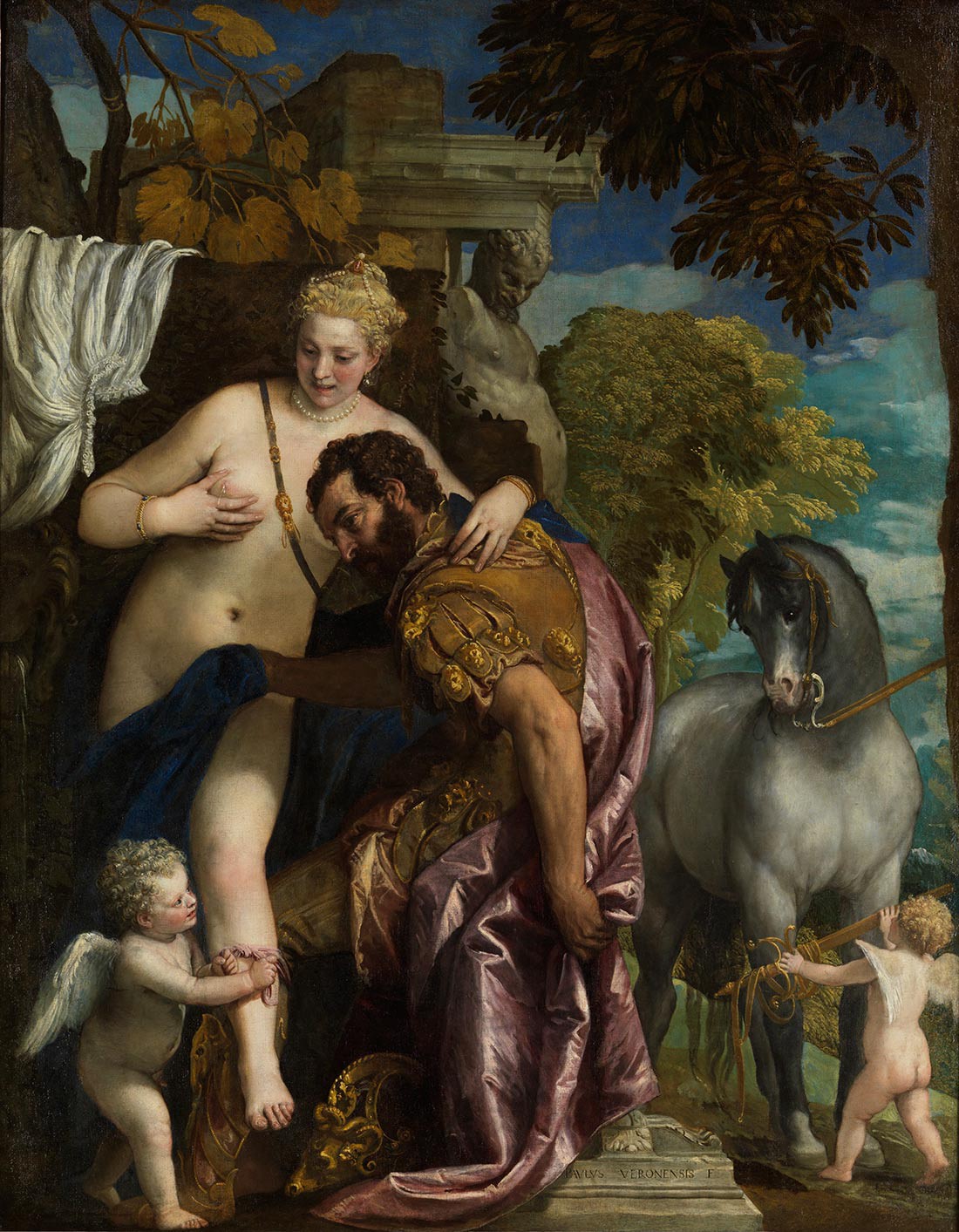
1575 Plague breaks out in Sicily, and spreads up to Milan, reducing the pop. of Venice by 90%; pop. of Paris 300K; London 180K; Cologne 35K. Between this year and 1600 192K slaves are transported from West Africa by the Portuguese. In Jan. the Protestant states of the Netherlands ask Elizabeth I to accept the crown of Holland and Zeeland, but she waffles because of her disapproval of republicanism and ends up offending them. On Feb. 8 Leiden U. in Leiden, South Holland is founded by Prince (1544-84) William I the Silent of Orange (1533-84) as a reward for their heroic defense against the Spanish the year before, becoming the oldest univ. in the Netherlands in modern times; they were offered the choice of a univ. or a tax cut; the city becomes known for as a center for science, gaining the nickname "City of Discoveries", with alumni and faculty incl. Jacobus van't Hoff, Johannes Diderik van der Waals, and Kamerlingh Onnes. On Feb. 13 Henry III is crowned king of France at Rheims Cathedral. In Apr. Henry III requests a renewal of the 1572 Treaty of Blois against Spain, to which Elizabeth I responds by giving him the Order of the Garter. On May 17 archbishop of Canterbury (since 1559) Matthew Parker (b. 1504) dies, and Lord Burghley nominates Edmund Grindal (1519-83), who opposes Elizabeth I's demand that he suppress discussion meetings of the Puritans, pissing her off; Parker leaves his collection of historical mss. to his alma mater Corpus Christi College in Cambridge. In the spring the Earl of Oxford travels to Europe, returns after squandering most of his inheritance, then presents Elizabeth I with a pair of embroidered gloves, causing gossip that they are lovers, and years later, that the Earl of Southampton (born this year) is their love child. In the summer Elizabeth I goes on another progress, culminating in the "princely pleasures" at Kenilworth, provided by her host the Earl of Leicester from July 9-18. On Sept. 21 (St. Matthew's Day) the San Mateo Hurricane devastates Puerto Rico. On Sept. 22 HRE Rudolf II is crowned king of Bohemia (until Mar. 11, 1611). On Sept. 22 after returning to England late last year, then being made earl marshal of Ireland by the queen and returning, only to fall ill with dysentery in Dublin Castle (claiming that he has been poisoned), Walter Devereux, 1st earl of Essex dies, and his studly son Robert Devereux (1566-1601) becomes the 2nd earl of Essex. On Sept. 26 Miguel de Cervantes is captured on the galley Sol near the Catalan coast by Algerian corsairs under Capt. Arnaut Mami (Mahomed the Albanian) ), and spends five years as a slave in Algiers, with four escape attempts until his family ransoms him in 1580. On Oct. 10 the Battle of Dormans sees French Roman Catholic hero Henry I, 2nd duke of Guise wounded, causing him to become known as Le Belafre (the Scarred), just like his daddy the 1st duke. In Nov. Essex returns from his 1573 Irish military expedition; Elizabeth I changes her daddy's policy of conciliating Irish chieftains and gets an act passed making all Ireland into shireland and investing the commissioners of justice with military powers which they soon abuse at will, pissing-off the Irish and causing them to look for a new William Wallace who will lead them in their fight for their free-ee-dom. At the Conference of Breda Philip II refuses to grant concessions to the Dutch rebels; meanwhile Diederik Sonoy, (a Protestant) becomes gov. of the Northern Quarter, and soon begins surpassing the Catholic Inquisitors in his cruel torture of Roman Catholics, despite warnings to desist by "Father William" of Orange - freedom is just a word for nothing left to what? Akbar the Great conquers Bengal, and next year it becomes part of the Mughal Empire, causing the pop. to convert to Islam. French Huguenot leader Philippe de Mornay, Seigneur du Plessis-Marly (1549-1623) is captured then ransomed, taking refuge with Henri de la Tour d'Auvergne, duc de Bouillon at Sedan, where he marries Charlotte Arbaleste. Spain declares bankruptcy again. The English Parliament grants freedom from arrest to its members and their servants. Elizabeth I orders the Coventry Cycle of Mystery plays (which the Puritans had banned) to be restored. By this year only three of Catherine de' Medici's seven children are still alive: Henri III, Duke Francois of Alencon, and Marguerite of Navarre. In 1575 (1576?) after joining Francis Drake's expedition to Panama in May 1572, returning to England with him, and sailing back to Panama with a 120-ton ship with a crew of 70, John Oxenham (Oxnam) (-1580) becomes the first non-Spanish Euro explorer to cross the Isthmus of Panama after starting from the coastal town of Careta and receiving aid from the Cimarrones to climb the Cordillera de San Blas to the mouth of the Chucunaque River on the Pacific Ocean; too bad, after building a shallow 45-ft. oared boat from milled cedar trees (first ship built in the New World by Englishmen), and using it to pirate Spanish ships, he is captured in mid-1578, and executed in Lima on Sept. 30, 1580. The Roman Catholic Church prohibits tobacco-smoking in any place of worship in the Spanish colonies. The Portuguese occupy and rebuild the destroyed town of Anfa (Casablanca) on the Moroccan coast, and name it Casa Branca (Casablanca); the surrounding Muslim tribes keep it under constant attack until they abandon it after an earthquake in 1755. The English word "goodbye" (originally godbye), a contraction of "God be with ye" is first used in a letter by Gabriel Harvey (1552-1631). The first Benandanti (It. "Good Walkers") from Friuli, Italy, claiming to travel out of their bodies while asleep to fight bad witches and ensure good harvest are accused of being heretics or witches; the last are in 1675. The Congregation of the Oratory is founded in Rome by St. Philip Neri. Louis de Gonzague (Gonzaga), Duc de Nevers (1539-95) succeeds his uncle Ferdinand de Gonzaque as grandmaster of the Priory of Sion (until 1595) :). Architecture: Tycho Brahe begins Uraniborg Castle ("fortress of the heavens") (finished in 1580), with a complete observatory, all paid for by Frederick II of Denmark on Hven Island between Sweden and Denmark; too bad that Frederick II's successor starts cutting him off, causing him to go to Bohemia in 1597. Inventions: The first European imitations of Chinese porcelain are made in Venice and Florence. Music: William Byrd (1540-1623) and Thomas Tallis (1505-85), Cantiones Sacrae (34 motets); dedicated to the queen after she grants them a monopoly in music printing. Art: Paolo Veronese (1528-88), Moses Saved from the Waters; Mars and Venus United by Love (157?). Nonfiction: Georg Braun and Franz Hogenberg, Map of London, England (Cologne); earliest known map of London. Thomas Blundeville (1522-1606), Arte of Logike; not pub. until 1599. Huarte de San Juan (1529-88), Examin de Ingenios para las Ciencias; the first to connect psychology with physiology. Christopher Saxton, Country Atlas of England and Wales. George Turberville, Book of Falconrie. Abraham Veale, Cookbook; English. Poetry: Tulsi Das (1532-1623), Ramcaritmanas; a retelling in the Hindi language of the story of ancient hero Rama, sparking his special worship in India. George Gascoigne (1539-78), The Posies. Torquato Tasso (1544-95), Gerusalemme Liberata (Jerusalem Liberated); about the Crusades. Plays: Anon., Gammer Gurton's Needle (English farce). Novels: Johann Fischart (1547-90), Geschichtsklitterung; adaptation of Rabelais' "Gargantua". Births: French mystic statesman-cardinal (founder of the French congregation of the Oratory) Pierre de Berulle (d. 1629) on Feb. 4 in Chateau Cerilly (near Troyes), Champagne. English clergyman-mathematician William Oughtred (d. 1660) on Mar. 5 in Eton, Buckinhamshire; educated at King's College, Cambridge U.; inventor of logarithmic scales and the slide rule; creator of the terms "x" for multiplication, "sin" for sine, and "cos" for cosine. French queen (1600-10) Marie (Maria) de' Medici (de Medici) (de Medicis) (d. 1642) on Apr. 26 in Florence; daughter of Grand Duke Francesco I de' Medici of Tuscany (1541-87) and Archduchess Johanna of Austria (1547-78) (daughter of HRE Ferdinand I and Anna of Bohemia); 2nd wife of Henri IV of France (1600-10); mother of Louis XIII (1601-43). German Jesuit astronomer (anti-Galileo) Christoph Scheiner (d. 1650) on July 25 in Markt Wald (near Mindelheim), Swabia. Italian Baroque painter Guido Reni (d. 1642) on Nov. 4 in Bologna; pupil of Denis Calvaert (1540-1619). British (Welsh) Benedictine monk-priest (St.) John Roberts (d. 1610) in Trawsfynydd, Merionethshire, N Wales; educated at St. John's College, Oxford U.; converts to Roman Catholicism in 1598. English "Weep, O Mine Eyes", "All Creatures Now" madrigal composer John Bennet (d. 1615). English pretender Arbella Stewart (Arbella Stuart) (d. 1615); daughter of Elizabeth Cavendish (-1581) (daughter of Bess of Hardwick) and Charles Stewart, 6th earl of Lennox, brother of James VI/I's father Henry Stewart, Lord Darnley. English Baptist co-founder Thomas Helwys (d. 1616); collaborator of John Smyth (1570-1612). Italian politician (favorite of Louis XIII's mother) Concino Concini, Marquis d'Ancre (d. 1617) in Florence. French "Sophonisbe" soldier-dramatist-economist Antoine de Montchrestien (d. 1621) in Falaise, Normandy. German theologian-theosophist-mystic Jakob Boehme (Böhme) (Behmen) (d. 1624) in Goerlitz, E Germany; brought up Lutheran; has his 1st mystical vision in 1600 via a beam of sunlight in a pewter dish, and his 2nd in 1610; influences mystics and Romantics alike for cents. English Jacobean "The Revenger's Tragedy", "The Atheist's Tragedy" poet-dramatist Cyril Tourneur (d. 1626). Italian "Pentamerone" poet and fairy tale writer Giovanni Battista (Giambattista) Basile (d. 1632) in Feb. (1575?) in Naples. British MP (1601-2) and lord deputy of Ireland (1622-9) Henry Cary, 1st Viscount Falkland (d. 1633); son of Sir Edward Cary and Catherine Knevet; educated at Exeter College, Oxford U.; husband (1602-) of Elizabeth Tanfield (1585-1639); father of Lucius Cary, 2nd viscount Falkland (1610-43); created viscount in 1620. German publisher Johann Carolus (d. 1634) in Muhlbach-sur-Munster. German composer Johann Stadlmayr (d. 1648) in Bavaria. Deaths: Spanish-born Jewish legal scholar Rabbi Joseph ben Ephraim Karo (b. 1488) on Mar. 24 in Safed, Palestine. Flemish religious poet Anna Bijns (b. 1493) in Antwerp. Spanish poet and statesman Diego Hurtado da Mendoza (b. 1503). English archbishop of Canterbury Matthew Parker (b. 1504) on May 17. English Bible scholar Richard Taverner (b. 1505) on July 14 in Oxford. Italian scholar Federico Commandino (b. 1509) on Sept. 5. French Roman Catholic marshal Gaspard de Saulx, sieur de Tavannes (b. 1509) in Sully; leaves valuable memoirs. English adventurer Sir Peter Carew (b. 1514) on Nov. 27. Dutch architect Cornelis Floris (b. 1514). Croatian Lutheran scholar Matthias Flacius (b. 1520) on Mar. 11 in Frankfurt, Germany. Spanish explorer Francisco de Ibarra (b. 1534) on June 3 in Panuco, Sinaloa, Mexico. Italian anatomist Constanzo Varolio (b. 1543).


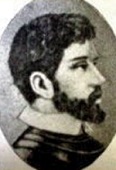

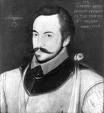

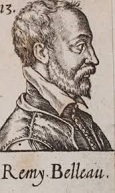
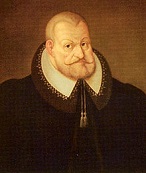
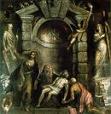
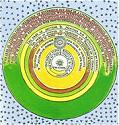

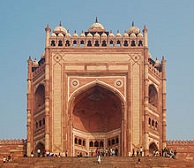
1576 On Jan. 25 attracted by the silver mines of Cambambe, the Portuguese colonize Angola in Africa, and found the port city of Luanda (São Paulo da Assunção de Loanda) (modern-day pop. 2.8M) with 400 settlers (100 families) and 400 soldiers under Paulo Dias de Novais (1510-89) - luanda take a little boat trip? On Feb. 8 radical Protestant MP Sir Peter Wentworth (1529-96) (brother of Radical Protestant MP Paul Wentworth) delivers his Famous Wentworth Parliamentary Address, arguing that MPs have the right to discuss any subject they wish, incl. Elizabeth I's succession, causing the other MPs to cut him off and send him to the Tower; when he gets out he is unrepentant, getting sent there again next Feb., becoming the first famous English MP? In Feb. Philip II sends Sieur de Champigny to ask Elizabeth I if she intends to aid Protestant rebels in the future, but she keeps him waiting for two weeks and sends the envoy back with an enigmatic answer. On Apr. 25 Holland and Zeeland, the two strongly Calvinist provinces (out of 17 provinces) of the Low Countries sign an Act of Federation in Delft, and since Muslim-killer Don John of Austria doesn't have a drop of toleration in him, war is inevitable. In the spring Elizabeth I drops all plans for marrying the twerpy duke of Alencon. On Apr. 9-June 7 the Lutheran League of Torgau meets in Torgau, Saxony, drawing up the Formula of Concord, eliminating Calvinism from Lutheranism, which is presented to elector August of Saxony next May 28, and signed by three electors, 20 dukes and princes, 35 free imperial cities, 24 counts, four barons, and 8K pastors, representing two-thirds of the Lutherans in Germany, but rejected by the Lutherans of Hesse, Zweibrucken, Anhalt, Pommeranian (land), Holstein, Denmark, Sweden, Nuremberg, Strasburg, and Magdeburg, and lobbied against by Elizabeth I of England. Set the boil to low? On May 6 after his brother the duke of Alencon supports the Protestant army sieging Paris, the Fifth French War of Religion (begun 1574) ends with the Edict of Beaulieu (Peace of Monsieur), promulgated by Henry III from Beaulieu-les-Loches, officially tolerating the "so-called reformed religion" in France again, except in Paris and the court, with special chambers created in eight parliaments with equal numbers of Huguenots and Catholics, and the Massacre of St. Bartholomew disclaimed, with the families who suffered from it reinstated; Alencon is created duke of Anjou; Henry of Navarre is released from house arrest and returns to the Protestant faith, causing the Duke of Guise and his brothers to form the Catholic (Holy) League of France to unite all French Catholics against Protestants; the "War of the Three Henries", a 3-way power struggle between Henry III, the Guise family, and the Huguenots begins, while the king's brother duke Francois of Alencon is used by the Guises. On May 24 Persian shah (since May 23, 1524) Tahmasp I (b. 1514) dies, and his son Ismail II (1537-77) becomes Safavid shah #3 of Persia (until Nov. 24, 1577); his younger brother Heydar Mirza seizes the throne and imprisons him, but the Qizilbash Asfhar tribe assassinates him and puts their boy Ismail back on the throne; too bad, he proves a cruel tyrant, and doesn't last long; meanwhile next year an Ottoman-Persian War begins (ends 1590) when the Ottomans attempt to conquer the Caucasus and Azerbaijan. In May Don John of Austria (most famous soldier in Europe) is ordered by his half-brother Philip II to proceed to the Low Countries as the new regent (gov.-gen.) of the Netherlands, and he accepts on condition that his plan to liberate Mary, Queen of Scots is approved, only to find that his secy. Juan de Escobedo (-1578) had not been able to get cheap Philip II to pay for it, making success in the Low Countries a condition, causing Don John to speed up and race across France disguised as a Moorish slave. On June 21 the gruesome Battle of Haldighat is a V for Mogul Emperor Akbar the Great over Rana Pratrap Singh of Mewar, whose blue-tinged horse Chetak (Cetak) is KIA. In the fall Elizabeth I orders archbishop of Canterbury Edmund Grindal to suppress all Puritan forms of worship, but he balks, writing his objections to her in Dec., causing her to get more pissed-ff and ban him from court. On Oct. 12 HRE (since 1564) Maximilian II (b. 1527) dies, and his brother Rudolf II (1552-1612) (with the hoglike Hapsburg lip) is crowned HRE and archduke of Austria (until jan. 20, 1612), proving to be an able astronomer but a dud as a ruler, suffering a nervous breakdown next year - still going with that AEIOU Austria rules the world bullwhacky, hand me my telescope and Miltown pills? On Oct. 15 the U. of Helmstedt (Academia Julia) is founded in Brunswick-Wolfenbuttel, Germany by the prince of Brunswick-Wolfenbuttel (1568-89) Julius, Duke of Brunswick-Luneburg (Brunswick-Lüneburg) (1528-89), becoming the first Protestant univ. of the N Holy Roman Empire, training Lutheran preachers along with law, medicine, and liberal arts. On Nov. 17 Queen Elizabeth's Ascension Day is upgraded to a great holy day ("Golden Day") in England. In Nov. Philip II's army of Flanders mutinies over an arrears in pay and sacks Antwerp in the "Spanish Fury", burning 600 houses and killing thousands, causing Dutch Roman Catholics and Protestants to unite against them under William of Orange, agreeing on Nov. 8 in Ghent to the Pacification of Ghent, granting limited tolerance to Protestants while authorizing a new army to take care of the mutinous troops; when Don John arrives in Luxembourg he is informed that he must accept the Pacification of Ghent to become gov.-gen.; Elizabeth I gives the Protestants gold in secret while putting on an act to fool Philip II. In Dec. the Sixth French War of Religion (ends 1577) begins when the Catholic League led by Duke Henry I of Guise and the Estates-Gen. of Blois fail to honor the Edict of Beaulieu, with Huguenots rebelling in Poitou and Guyenne. In Dec. the Admiral's (Lord Howard's) (Earl of Nottingham's) Men (Company), backed by powerful patron Lord High Adm. Charles Howard, 1st Earl of Nottingham (1536-1624) (cmdr. of the English fleet against the 1588 Spanish Armada) began performing at the Theatre, the first purpose-built public theater in London, becoming the #2 acting troupe after Shakespeare's Lord Chamberlain's Men. In Dec. after James Burbage (Burbadge) (1531-97) (father of Richard Burbage) gets pissed-off at the city of London for passing regulations on Inn-yards in 1574 and signs a 21-year lease of land in Finsbury Fields, Shoreditch (modern-day Hackney) outside the City of London Wall in an area known for houses of sin, with permission to build a playhouse, he opens The Theatre, becoming London's 2nd permanent theater after the Red Lion (1567), and the first successful permanent dedicated theatre built in England since Roman times, becoming home to the Lord Chamberlain's Men and actor-playwright William Shakespeare. Barom Reachea I dies, and Chey Chettha I (-1594) becomes king of Khmer (until 1594). English navigator Martin Frobisher (1535-94) (who had started out as a cabin boy in 1544) is placed in command of an expedition to the New World with the aid of the earl of Warwick, becoming the first English attempt to find a Northwest Passage to India, sailing in the ships Gabriel and Michael; he continues on the Gabriel after Michael rows back to shore, then 2 mo. later discovers Frobisher Bay in Canada; he returns with some pieces of "black earth", rumored to be gold, causing him to be sent on a 2nd voyage by the queen next year, which fails to find valuable ores, causing a 3rd flop to be tried, with Frobisher continuing in the queen's favor. The Jews of Poland are allowed to carry on unrestricted trade. Francis Bacon leaves Cambridge, and travels for three years with Sir Amyas Paulet, English ambassador in France, visiting Navarre, and later inspiring Shakespeare's play Love's Labour's Lost. Architecture: Andrea Palladio begins decorating the Il Redentore (Non Basilica del Santissimo Redentore) Church in Venice (finished 1577); the church is completed in 1592. Buland Darwaza in Fatehpur Sikri (25 mi. from Agra), India the largest gateway in India is built by Akbar the Great to commemorate his conquest of Gujarat, becoming the highest gateway on Earth. Science: Flemish physician-botanist Carolus Clusius (1526-1609) pub. a treatise on the flowers of Spain and Portugal, founding Modern Botany. English hydrographer Robert Norman rediscovers the Magnetic Dip (Inclination) of the compass (1544). French mathematician Francois Viete (Franciscus Vieta) (1540-1603) discovers Music: Tomas Luis de Victoria (1548-1611), Liber Primus. Nonfiction: Francois de Belleforest, Histoires Tragiques; incl. the story of Danish prince Amlet, who avenges his father's murder on his uncle after he marries his mother Geruthe, becoming a source for William Shakespeare'e "Hamlet"? Jean Bodin (1530-96), Six Books on the State (Commonwealth) (Les Six Livres de la Republique); rev. ed. in 1586; coins the term "republic" (Lat. "respublica" = govt. by the people) for matters of public law; a discussion of the ideal form of govt., which he considers to a hereditary monarchy be midway between the absolute monarchy of Niccolo Macchiavelli and the popular sovereignty of Protestants and monarchomachs; a big hit, helping him found the Politiques, who help bring about the 1598 Edict of Nantes; "The sovereign prince is only accountable to God"; on the importance of climate in shaping the character of a people (climatic determinism); "Men of a fat and fertile soil are most commonly effeminate and cowards, whereas a barren country makes men temperate by necessity, and by consquence careful, vigilant, and industrious"; "Sovereignty is that absolute and perpetual power vested in a commonwealth." Carolus Clusius (1526-1609), Treatise on the Flowers of Spain and Portugal; founds modern botany. John Dee (1527-1609), General and rare memorials pertayning to the Perfect Arte of Navigation; advocates British imperial expansion; frontispiece incl. a drawing of Britannia kneeling by the shore beseeching Elizabeth I to strengthen her navy, popularizing the term "British Empire". Thomas Digges (1546-95) (ed.), A Prognostication Everlasting; his father's perpetual almanac, with a new appendix containing the first detailed discussion of the Copernican heliocentric theory in the English language; "This orb of stars fixed infinitely up extends itself in altitude spherically, and therefore immovable the palace of felicity garnished with perpetual shining glorious lights innumerable, far excelling over [the] Sun both in quantity and quality the very court of celestial angels, devoid of grief and replenished with perfect endless joy, the habitacle for the elect." Sir Humphrey Gilbert (1539-83), A Discourse of a Discovery for a New Passage to Cataia; gets him a royal charter in 1578 to explore and colonize North Am. Fiction: Johann Fischart (1547-90), Das Gluckhafft Schiff von Zurich (satire). Poetry: Remy Belleau (1528-77), Les Amours et nouveaux Eschanges des Pierres precieuses (last book); poems of praise about precious stones. George Gascoigne (1539-78), The Steele Glas (verse satire). Art: Titian (1477-1576), Pieta; Christ suffers in a night setting; intended for his own tomb chapel; his last painting, left incomplete at his death, and finished by Jacopo Palma the Younger. Births: German scholar (Protestant-to-Roman-Catholic-convert) Caspar Schoppe (Jasper Scioppius) (d. 1649) on May 27 in Neumarkt, Upper Palatinate. Italian Baroque painter Giovanni Battista Viola (d. 1622)on June 16 in Bologna. English composer-organist (Winchester College) Thomas Weelkes (d. 1624) on Oct. 25 in Elsted, Sussex. English "Pericles, Prince of Tyre" dramatist George Wilkins (d. 1618). English wit and travel writer Thomas Coryat (Coryate) (d. 1617) in Somerset; educated at Winchester School, and Gloucester Hall, Oxford U.; court jester to James I. English Pilgrim Father John Carver (d. 1621); gov. #1 of Plymouth Colony. French engineer-physicist Salomon de Caux (Caus) (d. 1626); gets an English education. English dramatist-satirist John Marston (AKA W. Kinsayder) (d. 1634) in Coventry; educated at Oxford U. English-born Am. anti-Puritan atty.-writer Thomas Morton of Merry Mount (d. 1646). Am. Puritan gov. of Mass. (1634-) Thomas Dudley (d. 1653) in Northampton; founder of Newtowne, Mass. and First Church in Charlestown, Mass.; overseer of Harvard College. Spanish painter ("El Viejo") Francisco de Herrera (d. 1656); founder of the Seville School. Deaths: Venetian painter Titian (b. 1477) on Aug. 27 in Venice (plague); only victim of the plague to be given a church burial; many of his last paintings are stolen by looters - one shy of the big 100 and a lousy bug gets ya? German poet Hans Sachs (b. 1494); leaves 34 vols. containing 6.3K Meisterlieder - less is not more? Italian mathematician Girolamo Cardano (b. 1501) on Sept. 21 in Rome (suicide). Hungarian composer-lutenist Balint Bakfark (b. 1507) on Aug. 15; leaves Gaillarde Non Dite Mai - Bakfark is almost as fun to say as Bo Bice? Italian astronomer Aloysius Lilius (b. 1510) in Rome. Dutch portraitist Sir Antonis Mor (b. 1520). Austrian HRE (15464-76) Maximilian II (b. 1527) on Oct. 12 in Regensburg. Dutch anatomist Volcher Coiter (b. 1534); studied animal hearts, noting that the auricles contract before the ventricles, that the heart lengthens in systole and shortens in diastole, and that detached pieces of heart muscle continue to beat. English earl marshal Walter Devereux, 1st earl of Essex (b. 1541) on Sept. 22 in Dublin (dysentery) (poisoned by the earl of Leicester?).
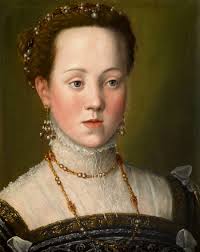
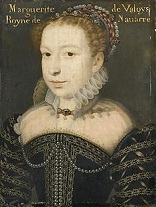

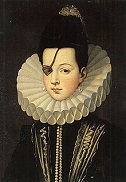

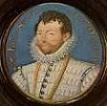




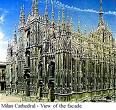


1577 On Jan. 1 the 1568 Ottoman-Hapsburg Hungarian peace treaty is renewed. In Jan. the Dutch reject an offer from Elizabeth I to mediate the dispute between the Dutch and Don John of Austria, who first tries to keep his mutinous troops then requests that they be given ships, then settles for them marching S loaded with their plunder, finally issuing the Perpetual Edict of 1577 to settle the civil war in the Netherlands, not exactly accepting the Pacification of Ghent, but requring a panel of theologians to hammer the toleration thingie out, which is rejected by William of Orange; meanwhile Walsingham's spies uncover a plot by Don John (assisted by the Duke of Guise) to invade England with 10K troops, depose Elizabeth, and marry Mary Stuart, which causes Elizabeth to knight Walsingham; Don John's plan never comes off because that's why he wanted them ships, but in May he makes his Joyous Entry into Brussels, promising to defend its historic privileges, along with that of the 17 Dutch provinces. On Apr. 17 the Battle of Lubieszow Lake sees the forces of the city of Danzig led by Jan Winkelbruch decisively defeated by Polish Winged Hussars led by Jan Zborowski. On May 21 after Queen Joan tries in vain to stop it, the law forbidding pesky Jews from emigrating to the Spanish colonies in Am. is repealed - let the profits roll? In May Elizabeth I places archbishop of Canterbury Edmund Grindal under house arrest at Lambeth Palace, deprives him of his jurisdictional powers, and orders the bishops to suppress all forms of Puritan worship; after the earl of Leicester intercedes, she lets him remain in office, but bans him from carrying out his official duties, leaving the Church of England without a spiritual leader for five years (until 1582). In the summer there is another bad outbreak of the plague in London, causing the queen to remain at Greenwich. In July after taking care of his scandalously loose low-class widowed mother Barbara Blomberg (1527-97) (former mistress of HRE Charles V) by promising to send her to Italy to meet Margaret of Parma but actually shipping her off to Spain, Don John of Austria meets Margaret (Marguerite) of Valois, Queen of Navarre (1553-1615), daughter of Henry II and Catherine de' Medici, and sister of Frances II, Charles IX, Henry III, and Elizabeth of Valois, and after she leaves he seizes Namur, after which rumors spread of a love tryst; meanwhile he sends his secy. Juan de Escobedo (1530-78) to plead with Philip II to send his so-called mutinous troops back so he can finish off the Protestants, and the states-gen. figure him out and declare war on him; meanwhile when Escobedo gets to Spain, he ends up blabbing about a love affair between Philip II's chief secy. (since 1543) Antonio Perez (1540-1611) of Aragon (former friend and now mortal enemy, who had got Escobedo his job to spy on Don Juan, only to find him become loyal) and the widowed (since 1573) eyepatched Ana Mendoza de la Cerda (1540-92), princess of Eboli, which, combined with a bunch of lies concocted by Perez, causes pissed-off Philip II to order his assassination, which after three attempts is finally done on Easter Monday night, Mar. 31, 1578 in an alley outside the Church of St. Maria in Madrid (demolished 1868); too bad for Perez, Philip II finally becomes suspicious of him and gets him in legal and criminal hot water for years, getting the princess put under house arrest for life, while he escapes one jail after another until fleeing to France on Nov. 23, 1591 disguised as a shepherd in a snowstorm, spending the last 20 years of his life selling all his state secrets and painting Philip II as a cruel, intolerant, fanatical, er, never mind. In Sept. after Henry of Navarre is recognized as the head of the Huguenot party, the Sixth French War of Religion (begun 1576) ends with the Peace (Treaty) of Bergerac, with Henry III rescinding most of the concessions to the Protestants made in the Edict of Beaulieu, confirming it six days later in the Edict of Poitiers. On Nov. 11 Elizabeth I appoints anti-Puritan Sir Christopher Hatton (1540-91) to her Privy Council, knights him, and makes him vice-chamberlain of her household; he also becomes her lover (does he do it with his hat on?); meanwhile in Nov. not-yet-sir Francis Drake (1543-96), after being presented to the queen and sponsored by Hatton sets out from England with five ships to circumnavigate (not circumcize?) the world via Cape Horn while sacking Spanish towns and harrying Spanish ships that had been attacking English ships ("So it is that I would be revenged on the king of Spain for divers injuries that I have received" - Elizabeth I); his own ship is the Pelican, which he renames the Golden Hind (Hinde) as he enters the Strait of Magellan in honor of Hatton, whose coat of arms is a golden female deer; he completes his epedition in 1580, and is knighted in 1581. Danzig surrenders, ending Polish opposition to Stephen Bathory; Danzig issues a silver necessity thaler containing one of the finest numismatic portraits of Christ. Lord Nobunaga dispatches his chief gen. Hideyoshi to conquer 12 W Honshu provinces; Hideyoshi seizes Nagasaki. The Doge's Palace in Venice burns down, taking Titian's painting of the Battle of Cadiz with it. Sir Fulke Greville, 1st Lord Brooke (1554-1628) goes to Queen Elizabeth I's court with his handsome poetic school chum Philip Sidney (1554-86), and both become prominent courtiers. Pope Gregory XIII commissions Giovanni Pierluigi da Palestrina to totally revise the Gregorian Chant. Katharina Kepler gets her 6-y.-o. son Johannes Kepler out of bed to see Tycho Brahe's comet. A botanical garden is founded in Leyden, presided over by de l'Ecluse. The Curtain Theatre, London's 2nd playhouse opens in Finsbury (until 1622?). A Hebrew press is established in Safed, Palestine by Eliezer Ashkenazi and Abraham Ashkenazi, becoming the first press E of Constantinople and W of China; it stays in operation for only a decade. Architecture: High Gothic Milan Cathedral is consecrated by Cardinal Carlo Borromeo. Science: Tycho Brahe measures a comet as at least 4x as distant as the Moon, proving that they're not atmospheric phenomena. Nonfiction: William Allot, Thesaurus Bibliorum. Jacob Andreae, Martin Chemnitz et al., Lutheran Book of Concord. Richard Eden, History of Travel in East and West Indies. William Harrison, The Description of Britain; incl. a description of the important place of hopped beer in Elizabethan society, calling it the preferred beverage of the elite, while unhopped ale is an "old and sick men's drink"; contains a complete description of the beer-making process; "Our drink, whose force and continuance is partly touched already, is made of barley, water, and hops, sodden and mingled together, by the industry of our brewers in a certain exact proportion." Raphael Holinshed (1529-80) (ed.), Chronicles of England, Scotland, and Ireland (2 vols.) (1577, 1587); histories of England, Scotland, and Ireland by various writers; incl. Description of Elizabethan England by William Harrison (1534-93); Holinshed wrote the history of England; started out as a universal history by his boss, Dutch-born printer Reginald (Reyner) Wolfe (-1573), and this is an abridged vers.; used by Elizabethan dramatists incl. Shakespeare. Philippe de Mornay (1549-1623), Excellent Discours de la Viet et de la Mort. St. Teresa of Avila (1515-82), The Interior Castle; the soul as a crystal globe-shaped castle with seven mansions representing the seven stages to union with God. Johann Weyer, De Praestigiis Daemonum; incl. False Hierarchy of Demons (Pseudomonarchia Daemonum). Art: El Greco (1541-1614), The Disrobing of Christ (1577-9) (Toledo Cathedral); his first work in Spain. Martin de Vos (1532-1603), Nativity. Music: Anon., Geuzenlied Boek; an anthology of Dutch songs, incl. the nat. anthem Wilhemus van Nassouwe (William of Nassau) (AKA Het Wilhelmus or The William), written by Philip de Marnix (1540-98)? Births: Italian tragic heroine Beatrice Cenci (d. 1599) on Feb. 6 in Rome. English "Anatomy of Melancholy" writer-clergyman Robert Burton (d. 1640) (AKA Democritus Junior) on Feb. 8 in Lindley Leicestershire; educated at Brasenose College, Oxford U. Danish-Norwegian king (1588-1648) Christian IV (d. 1648) on Apr. 12 in Frederiksborg Palace; son of Frederick II and Sofie of Mecklenburg-Schwerin. Flemish "Rubinesque" baroque painter and diplomat Sir Peter Paul Rubens (d. 1640) on June 28 in Siegen, Westphalia; Protestant father (d. 1587) and Roman Catholic mother; knighted in 1630 (Charles II) and 1631 (Philip IV) - chunky love? English colonial admin. Thomas West, 3rd Baron de La Warr (d. 1618) (Lord Delaware) on July 9 in Wherwell Abbey, Hampshire; son of Thomas West, 2nd baron De La Warr and Anna Knollys (daughter of Catherine Carey); great-grandson of Mary Boleyn (1499-1543); first English colonial gov. of Va. (1610-11); educated at Queen's College, Oxford. German prince-elector archbishop (1612-50) Ferdinand of Bavaria (d. 1650) on Oct. 6 in Munich; son of Duke William V; brother of Maximilian I (1573-1651). Italian Mannerist portraitist Cristofano Allori (d. 1621) on Oct. 17 in Florence; son of Alessandro Allori (1535-1607); pupil of Gregorio Pagani. French Roman Catholic Capuchin friar (l'Eminence Grise") Father (Pere) Joseph (Francois Leclerc du Tremblay) (d. 1638) on Nov. 4 in Paris; confidant and secret agent of Cardinal Richelieu. English atty. gen. (1631-4) William Noy (d. 1634) in Pendrea Estate, St. Buryan, Cornwall; educated at Exeter College, Oxford U. English "Earthly Joys" naturalist-gardener-traveller John Tradescant the Elder (d. 1638) in Suffolk; father of John Tradescant the Younger (1608-62). Dutch poet Jacob "Father" Cats (d. 1660). Deaths: Italian chef Bartolomeo Scappi (b. 1500) on Apr. 13. Belgian Walloon composer Mattheus Le Maistre (b. 1505) in Dresden, Germany. English scholar-diplomat Sir Thomas Smith (b. 1513) on Aug. 12. French poet Remy Belleau (b. 1527) in Paris. Swedish king (1560-8) Eric XIV (b. 1533) on Feb. 26 in Orbyhus Castle (poisoned bowl of pea soup). German composer Jakob Meiland (b. 1542) on Dec. 31; leaves St. Matthew Passion. German mad duchess Anna of Saxony, princess of Orange (b. 1544) on Dec. 18 in Dresden. Italian physician-botanist Matthiolus (b. 1501).


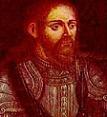
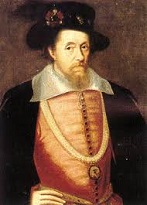







1578 On Jan. 31 the Battle of Gembloux in Gembloux, Brabant in modern-day Belgium sees a 1.2K-man Spanish advance force spook a 20K-man retreating Dutch Protestant army, allowing the rest of the 17K-man Spanish force to crush them; Alessandro Farnese (1545-92), son of duke Ottatvio Farnese of Parma-Pacienza gets the credit, and replaces Don John of Austria, who claims ill health, and after receiving news of the Mar. 31 assassination of his personal secy. Antonio Perez, he continues campaigning although ill, dying on Oct. 1; no loss, as Farnese proves as able as William I the Silent, and uses every trick in Machiavelli's book to sow discord in the S Netherlands? In Mar. James VI (1566-1625) is declared old enough to assume rule of Scotland after the lords mount a coup against the earl of Morton, causing him to resign the regency. In the spring Elizabeth I's longtime lover Robert Dudley, 1st earl of Leicester secretly weds her tighter, er, nicer cousin Lettice Knollys, Countess of Essex (Viscountess Hereford) (1543-1634), daughter of Sir Francis Knollys (1514-96) and Catherine Carey (1524-69), daughter of Anne Boleyn's sister Mary Boleyn (1499-1543); on Apr. 28 Elizabeth finds out, and in May she sends a marriage proposal to the duke of Alencon with the secret goal of getting the French king (his brother) to commit France to the Dutch cause against Philip II; she offers to mediate between the Dutch and Don John of Austria, but finds him dead and Alessandro Farnese in charge; luckily for Elizabeth, Lettice has a young son, Robert (b. 1567), by her first marriage to Walter Devereux, 1st earl of Essex, who will grow up to comfort her old age. On July 31 the Battle of Rijmenam (Rijmenam-Mispeldonck) in Rijmenam in modern-day Belgium is a D for the Protestants under ailing Don John of Austria (b. 1547), who regroups in Namur in Sept., and dies of typhus on Oct. 1, leaving Alessandro Farnese in sole charge. Rocking the suburbs, just like Michael did? Pushy Portugual goes too far, tries to reverse 7/11, and ends up zonking itself, letting Spain take it over? On Aug. 4 after ambitious Sebastian I of Portugal (b. 1554) leads an expedition to Morocco to Christianize the Muslim Moors in alliance with deposed sultan al-Mutawakkil, his 20K-man army is drowned and he is KIA along with al-Mutawakkil at the Battle of the Three Kings (Alcacer Quibir) in Alcazar; since his body is never found, his subjects keep hoping for his return, calling him "the Desired"; Portugal begins its decline after his death; his regent and great-uncle Cardinal Henrique, the penultimate male prince of the legitimate line of the House of Braganza (Braganca) (founded 1442) becomes Henry (Henrique) I (1512-80), king #17 of zonked Portugal, which on his watch falls under Spanish control for 60 years; Abd al-Malik dies, and his brother Ahmad I al-Mansur (El-Mansour Eddahbi) (1549-1603) becomes emir of Morocco (until Aug. 25, 1603), building the El Badi ("Marvelous") Grand Palace in Marrakesh and claiming the caliphate; Philip II of Spain orders the aged Duke of Alva on his last mission for the House of Hapsburg to conquer Portugal. In Sept. sure-to-be-Sir Francis Drake (1543-96) discovers the 400-mi.-wide Drake Passage between Cape Horn and the South Shetland Islands, rounding the Horn in 17 easy days, easily sailing past the lethal Four Evangelists and Desolation Island at the W end. In Dec. Elizabeth I has a tooth pulled after 9 mo. of pain only after Bishop Aylmer of London has one of his teeth pulled out in her presence; she refuses to have any more pulled for life. Swedish king (since Sept. 30, 1568) John (Johan) III Vasa (1537-92) secretly converts to Roman Catholicism, and tries unsuccessfully to make Sweden a Roman Catholic country (until 1584), entering the anti-Russian league with Stephen Bathory of Poland. Ismail II is killed after ordering the execution of all his brothers, and his brother Mohammed Mirza becomes Mohammed Khodabanda (Khudabanda) (-1595), Safavid shah #4 of Persia (until 1587), taking over the war against the Ottomans and sending his #1 son Hamzeh Mirza to fight them. Born to be wild? Japanese feudal lord Otomo Sorin (Otomo Yoshishige) (Fujiwara no Yoshisige) (1530-87), daimyo of the Otomo Clan in Funai (Oita), Kyushu, who met St. Francis Xavier in 1551 then became a Buddhist monk in 1562 under the name Sanbisai Sorin converts to Christianity, and is baptized under the name Francisco; too bad, it's only a political move? - underlying issues need to be addressed? Sir Humphrey Gilbert and his half-brother Sir Walter Raleigh begin an expedition to North Am., but their ships are attacked by the Spaniards off Cape Verde, forcing them to return to England. The Shroud of Christ is transported permanently from Chambery, France (since 1453) to Turin, Italy, new capital of the Savoys, and placed in the Cathedral of St. John the Baptist, where it is publicly displayed only 11x in the next four cents., and is given in 1983 to the Vatican under the custody of the archbishop of Turin. The Catacombs of Rome, lost since the 10th cent. are rediscovered. The leader of the Tibetan Gelugpas receives the title "Dalai" (Ocean) from Altan Khan. The Levant Trading Co. is founded in London. The Conrade Brothers start a faience pottery factory in Nevers, France. A grammar of the Zapotec language of Oaxaca, Mexico is pub. in Cordova, Spain by Dominican friars; by modern times there are still 500K speakers of the language. Architecture: Pont Neuf, the oldest bridge over the Seine River in Paris to survive to modern times, designed by Jean Baptiste Androuet du Cerceau (1544-90) is built. The Purana Pul ("Old") Bridge across the Musi River in Hyderabad, India is built. Nonfiction: Jacques Cujas (1520-90), Commentaries on Roman Law. John Florio (1553-1625), First Fruits, Which Yield Familiar Speech, Merry Proverbs, Witty Sentences, and Golden Sayings; A Perfect Induction to the Italian and English Tongues; dedicated to Robert Dudley, 1st earl of Leicester; gets him admitted to Magdalen College, Oxford U. in 1881. Abraham Ortelius (1527-98), Synonymia Geographica; criticism of ancient geographers; pub. in 1596 as "Thesaurus Geographicus", and again in 1596, containing the first mention of continental drift. Poetry: Nicholas Breton (1545-1626), The Workes of a Young Wit; A Floorish upon Fancie. Pierre de Ronsard (1524-85), Sonnets pour Helene; to Helene de Surgeres. Guillaume de Salluste, Sieur Du Bartas (1544-90), La Sepmaine; ou, Creation du monde (The First Week, or, the Creation of the World); hexameter epic based on the Seven Days of Creation in Genesis, which is a hit, going through 42 eds. by 1632, getting widely translated and becoming the basis of Milton's "Paradise Lost", making him France's #1 poet of the late 16th cent., and a hit in England and Scotland after James VI becomes a fan; he follows with a 2nd part "La Seconde Sepmaine" (1584), which is left unfinished at his death, and completed in 1603. Novels: John Lyly (1554-1606), Euphues (Gr. "graceful, witty"): the Anatomy of Wyt (Dec. 2); first English novel?; starts the florid trend of "Euphuism", a preciously ornate, sophisticated, and erudite writing style, which is picked up by Elizabeth I in her writing and public speaking, incl. the sayings "All is fair in love and war" and "Be valyaunt (valiant), but not too vetnurous". Births: German landscape painter Adam Elsheimer (d. 1610) on Mar. 18 in Frankfurt am Main. English physician (founder of modern physiology) (discoverer of the complete systemic circulation and properties of blood) William Harvey (d. 1657) on Apr. 1 in Folkestone ; educated at the King's School, Canterbury, and Gonville and Caius College, Cambridge U. - no fool? Spanish Hapsburg king (1598-1621) Philip III (the Pious) (d. 1621 on Apr. 12 in Madrid; son of Philip II and 4th wife Anna, daughter of HRE Maximilian II and Maria of Spain; husband (1599-1611) of Margaret of Austria, sister of HRE Ferdinand II. Austrian HRE (1619-36), archduke of Styria (1590-1637), king of Bohemia (1617-37), and king of Hungary and Croatia (1618-25) (Roman Catholic champion) Ferdinand II of Styria (d. 1637) on July 9 in Graz, Styria; son of Archduke Charles of Styria; grandson of HRE Ferdinand I; educated by the Jesuits, who teach him to hate the P word? English bishop of Worcester John Prideaux (d. 1650) on Sept. 7 in Hartford (near Ivybridge), Devon; educated at Exeter College, Oxford U.; father of Matthias Prideaux (-1646); teacher of Sixtinus Amama (1593-1629). English Gunpowder Plotter Ambrose Rokewood (d. 1606) in Stonegate, York. Spanish king (1598-1621) and king of Naples-Netherlands-Portugal-Sicily (1598-1621) Philip (Felipe) III (d. 1621) in Madrid; son of Philip II of Spain and Anna of Austria. Dutch (Flemish) anatomist Adriaan van der Spiegel (Adrianus Spigelius) (d. 1625) in Brussels; Casserio's successor at Padua and the last of the great Paduan line of anatomists; pupil of Girolamo Fabrici. Ukrainian divine Meleci Smatrycki (d. 1634); founder of Church Slavonic. Neapolitan painter Giovanni Battista Caracciolo (d. 1635). English jurist Sir Thomas Coventry, 1st Baron Coventry of Aylesborough (d. 1640); educated at Balliol College, Oxford U.; knighted in 1617; created baron in 1628. Deaths: Italian artist Giulio Clovio (b. 1498) on Jan. 5 Portuguese mathematician Pedro Nunes (b. 1502) on Aug. 11 in Coimbra. Italian violin maker Andrea Amati (b. 1505). French surgeon Pierre Franco (b. 1505). French Louvre architect Pierre Lescot (b. 1515) on Sept. 10 in Paris. Croatian Ottoman adm. Piyale Pasha (b. 1515) on Jan. 21. Scottish countess Margaret Stewart (b. 1515). Scottish nobleman James Hepburn, 4th earl of Bothwell (b. 1536) (Mary Stuart's husband) on Apr. 4; dies mad and chained to a pillar in the dungeons of Dragsholm Castle in Zealand, Denmark; his titles and lands are forfeited to the crown; his mummified body is kept under glass at Faarevejle Church near Dragsholm. English playwright George Gascoigne (b. 1539) in Oct. European super-soldier and regent of the Netherlands Don John of Austria (b. 1545) on Oct. 1 near Namur (typhus); buried in the Escorial. Portuguese king (1557-78) Sebastian (Sabastiao) I (b. 1554) on Aug. 4 in Alcazar, Morocco (KIA).




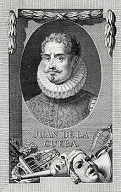
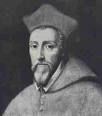



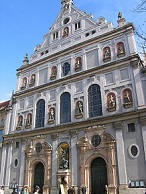

1579 On Jan. 23 the Union of Utrecht, engineered by Prince William I the Silent of Orange's younger brother Count John (Johann) VI of Nassau-Dillenburg (1536-1606) unites the seven Protestant N provinces of the Netherlands into the Repub. of the United Netherlands, which signs a military alliance with the English. On Mar. 11 solicitor-gen. (since Mar. 14, 1569) Sir Thomas Bromley (1530-87) is appointed privy counsellor of England, followed on Apr. 26 by lord chancellor (until Apr. 11, 1587), succeeding Sir Nicholas Bacon (b. 1510), who died on Feb 20. On Mar. 12-July 1 after it falls into the hands of the rebels, the Siege of Maastricht in the Netherlands sees the Spanish under Gen. Alexander Farnese siege it with 20K men, with the 1.2K brave defenders fighting them underground in tunnels, killing 2.5K Spanish while losing 1K soldiers along with 800-4K civilians killed during a 3-day looting spree. On May 17 the Treaty of Arras sees the 10 "Malcontent" Roman Catholic (mainly Walloon) provinces of S Netherlands agree to form a union and support Philip II's cause under Gen. Alessandro Farnese, who sets up his base in Hainaut and Artois; Farnese goes on to take Tournai, Maastricht, Breda, Bruges, and Ghent, aiming to reconquer all of Brabant and Flanders, and the northern cause seems hopeless unless Queen Elizabeth I can get the French to aid them, causing her to flirt more openly with Mr. Pockmarks Francis of Valois, duke of Anjou, who makes a secret visit to her on Aug. 17-29, quiets rumors that he is not a hunk, and ardently woos her, but withdraws, er, shoots, er, leaves abruptly before marriage is agreed to. On June 17 after Sir Francis Drake and his crew get chased by Spaniards up the coast of Calif., seeking escape by the nonexistent Northwest Passage, they land at Drake's Bay 30 mi. NW of modern-day San Francisco (near tall white cliffs), where the friendly Indians think they are gods, and on June 26 offer them their entire country; he accepts, and leaves a brass plate announcing the new English domain of New Albion (N Calif.) "by the grace of God and in the name of her majesty Queen Elizabeth of England"; in 1932 chauffeur William Caldeira finds the plate under some dirt on the shore, but later tosses it on the N shore of the Golden Gate Bridge, where in 1936 San Fran. store clerk Beryle Shinn finds it again while hunting pheasant; it ends up in the U. of Calif. On July 17 Queen Elizabeth is almost killed accidentally by fowler Thomas Appletree on her royal barge near Greenwich as she is on her way to visit Deptford in the company of the earl of Lincoln and the French ambassador as he is rowing up and down the river with some children of the queen's chapel randomly shooting with a caliver, and one shot passes within 6 ft. of her royal person, piercing both arms of an oarsman; on July 21 she pardons him from the gallows at the last moment after the rope is put around his neck to make him think about it - she would have made a good football coach? On July 18 the Second Desmond War (Rebellion) (ends Nov. 11, 1583) in Munster, Ireland begins when the oppressed pissed-off Roman Catholic Irish, led by Gerald FitzGerald, 15th Earl of Desmond (1533-83) In Sept. John Stubbs (Stubb) (1543-91) of Lincoln's Inn pub. the pamphlet The Discovery of a Gaping Gulf whereunto England is Like to be Swallowed by another French Marriage, claiming she is too old to have children and that English values would be undermined by her marriage to a Frog; on Sept. 27 Elizabeth issues a proclamation condemning it, and orders the right hands of Stubbs and his publisher William Page stubbed, er, severed at Westminster under an old law of Mary I against sedition by stubby pages; "Pray for me, now that my calamity is at hand" says comedian Stubbs, right before his right arm becomes a bloody stubb, after which he screams "God save the Queen!"; on Nov. 24 cradle-robber Elizabeth I is publicly betrothed to her "Frog" Anjou in front of witnesses, and signs marriage articles that give her 2 mo. to get her subjects to agree to it before it becomes final, but they don't and it doesn't, and after hanging on for 3 mo. he begs for money and she gives him 10K pounds and sends him off to the Netherlands; at first she rejected him, but when he matures she finds her soulmate and really falls in love with him, and when her subjects won't accept him and approve their marriage, it breaks her heart for life, and she gives up all pretence to wanting to be married to anybody? On Oct. 24 Bavarian duke (since Mar. 7, 1550) Albert (b. 1528) dies, and is succeeded (until 1597) by Jesuit-educated Duke William V the Pious (1548-1626) (until Oct. 15, 1597); he hires Italian-Dutch painter-architect Friedrich Sustris (1540-99) as chief architect, who goes on to expand the Residenz in Munich (founded 1385), and design St. Michael's Church in Munich (1585-97), which becomes a spiritual center of the Counter-Reformation, and the Old Academy (Wilhelminum) next door, a college for Jesuits (finished 1590), which after their expulsion in 1773 is used by army cadets, becoming the court library-archives in 1783-1826, followed by a school of painting and sculpture. At the instigation of Sultan Murad II's mother, Mehmed Sokullu is executed, and grand viziers begin to change almost yearly at the whim of his wimmin? A papal nuncio is sent to Switzerland, and he chooses Lucerne as his seat - that'll churn things up? Portuguese merchants set up a trading station in Bengal. The cloth-making industry is introduced to the city of Liberec in Bohemia (first mentioned in 1348), after which it becomes the #2 city in Bohemia and the "Manchester of Bohemia". English Jesuit father Thomas Stephens (1549-1619) becomes the first Englishman to settle in Portuguese India (Goa). The English Eastland Co. (Merchants of Elbing) is founded for trading with Scandinavia. Venerable English College is founded in Regola, Rome as a clone of the one in Douai. Philip Sidney and Edmund Spencer form a lit. society to encourage the writing of English poetry in classical meters. Torquato Tasso is committed to the Sant' Anna Hospital in Ferrara, which becomes a 20th cent. tourist spot. The U. of Vilnius (Vilnyus) (origially the Jesuit College of Vilnius) is founded by Stephen Bathory (Báthory) (1533-86), grand duke of Lithuania and king of Poland (since May 1, 1576), becoming the first in the Baltic States, the 3rd in the Polish-Lithuanian Commonwealth (after Cracow U. and Konigsberg U.); in 1831-1919 it is closed down. Architecture: Andrea Palladio designs the Teatro Olimpico (Olympic Theater) in Vicenza, Italy (finished in 1585). Art: El Greco (1541-1614), L'Espolio. Inventions: Coaches are introduced in England; before this everybody incl. the queen rode on horseback. Nonfiction: George Buchanan (1506-82), De Jure Regni apud Scotos; big hit, in the form of a dialogue, teaching the doctrine that all political power comes from the people, and that the king is bound by these conditions and may be resisted and punished; in 1584 Parliament passes an act condemning it, doing ditto in 1664; in 1684 Oxford U. burns copies; his ideas lead to the deposition of James VII in 1688? Thomas Digges (1546-95), Arithmetical Military Treatise; contains the first printed use of the term "pynt blancke" (Fr. "pointe a blanc" = pointed at white) is first used to mean the white bulls-eye of practice targets used by archers. Stephen Gosson (1554-1624), Schoole of Abuse, Containing a Pleasaunt Invective against Poet, Pipers, Plaiers, Jesters and such like Caterpillers of a Commonwelth; a violent attack on the theater and poetry; contains an unauthorized dedication to Philip Sidney, causing him to write the reply Apologie for Poetrie in 1580. Thomas Lodge (1558-1625), A Defense of Poetry, Music and Stage Plays; contra Gosson. Sir Thomas North (1535-1604) (tr.), Plutarch's Lives of the Noble Grecians and Romans; becomes a major source for Shakespeare's plays. Paolo Paruto, Historia Vinetiana. Unity of the Brethren, Kralice Bible (6 vols.) (1579-83); first complete Bible trans. in Czech from the original languages; 3rd ed. 1613; incorporates the Czech trans. of the New Testament by Jan Blahoslav (1523-71). Poetry: St. John of the Cross (1542-91), Dark Night of the Soul. Edmund Spenser (1552-99), The Shepheardes Calendar (12 eclogues). Plays: Juan de la Cueva (1550-1612), Primera parte de las Comedias y Tragedias; first of 14 poor plays and four bad poems. Novels: John Lyly (1553-1606), Euphues and His England (July 24). Births: German Welf duke of Brunswick-Luneburg (1635-66) Augustus the Younger (d. 1666) (Gustavus Selenus) on Apr. 10 in Dannenberg; father of Rudolph Augustus (1627-1704), Anthony Ulrich, Ferdinand Albert, and Clara Augusta. French Huguenot leader Henri II, Duke of Rohan (d. 1638) on Aug. 21 in Chateau Blain, Brittany; son of Rene II (1550-86); husband (1603-) of Marguerite de Bethune, daughter of the duke of Sully. Dutch dramatist Samuel Coster (d. 1665) on Sept. 16 in Amsterdam. Peruvian Dominican monk (St.) Martin de Porres Velazquez (Velázquez) (d. 1639) on Dec. 9 in Lima; Spanish father, Panamanian-born black slave mother; patron saint of mixed-race people; canonized in 1962 by Pope John XXIII; feast day: Nov. 3. Dutch (Flemish) "Wild Boar Hunt" painter Frans Snyders (Snijders) (d. 1657) on Nov. 11 in Antwerp; student of Pieter Brueghel the Younger and Hendrick van Balen; friend of Sir Anthony van Dyck. English dramatist John Fletcher (d. 1625) in Dec. in Rye, Sussex; collaborator of Francis Beaumont (1584-1616) - Beaumont makes it to 32, Fletcher to 46? Italian Baroque painter ("first class painter of the second rank") Carlo Saraceni (d. 1620) in Venice; speaks French. English statesman (founder of Md.) (Roman Catholic) George Calvert, 1st Lord (Baron) Baltimore (d. 1632) in Kilpin, Richmondshire; father of Cecil Calvert (1605-75), Leonard Calvert (1606-47), and Philip Calvert (1626-82). French Baroque painter ("Master of Candlelight") Trophime Bigot (d. 1650) in Arles. Deaths: Swiss Protestant leader Hans Franz Nageli (b. 1497) on Jan. 9 in Bern. Spanish conquistador Gonzalo Jimenez de Quesada (b. 1509). English politician Sir Nicholas Bacon (b. 1510) on Feb. 20 in Gorhambury; buried in St. Paul's Cathedral. Italian anatomist Giambattista Canano (b. 1515) in Ferrara. English merchant-financier Sir Thomas Gresham (b. 1519); endows Gresham College in his will (founded 1596). Spanish-born Jewish Ottoman diplomat-financier Don Joseph Nasi (b. 1524) in Constantinople. English Bible scholar William Whittingham (b. 1524) on June 10 in Durham. English soldier-statesman Sir William Drury (b. 1527) on Oct. 13 in Dublin. Bavarian duke (1550-79) Albert V (b. 1528) on Oct. 24.